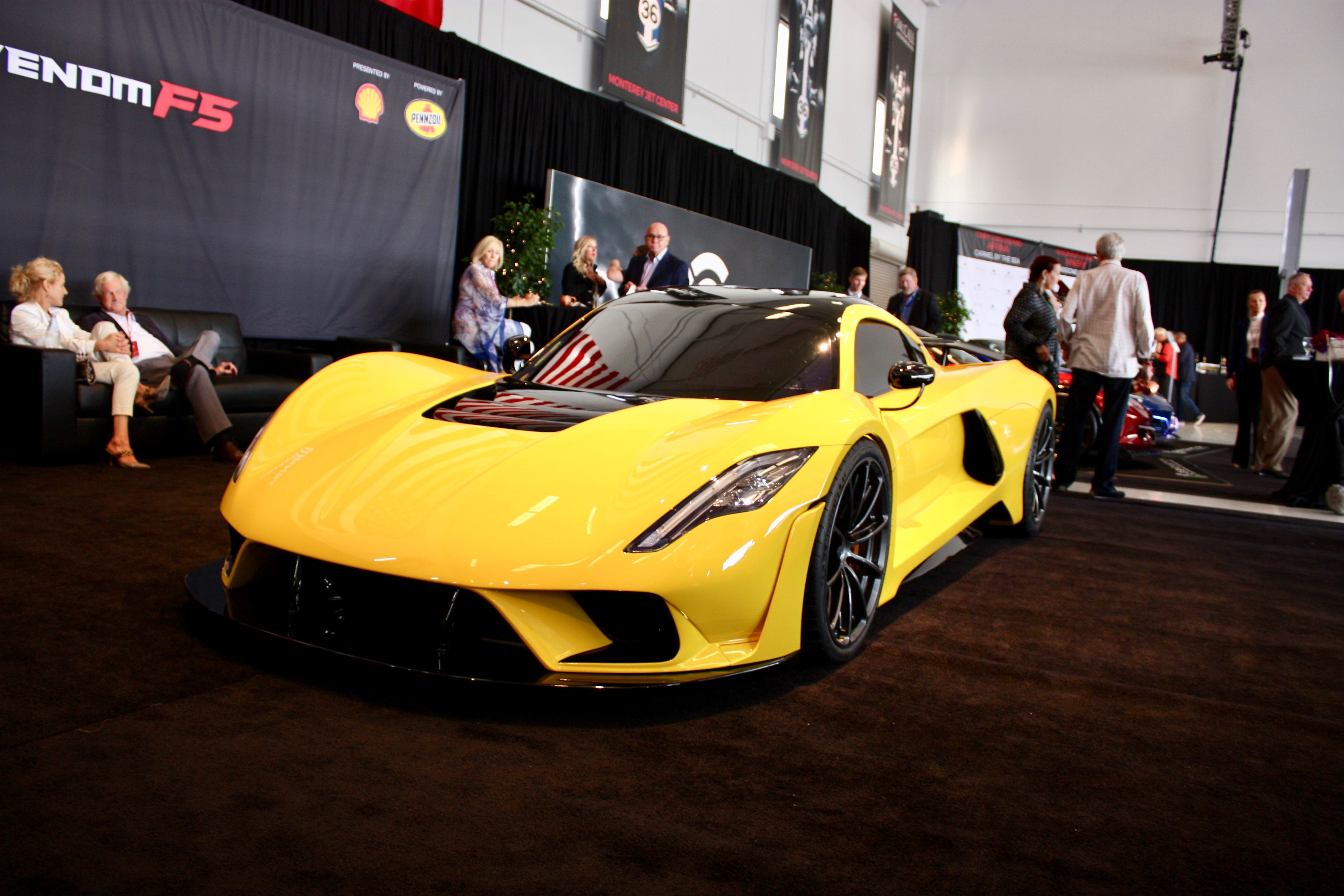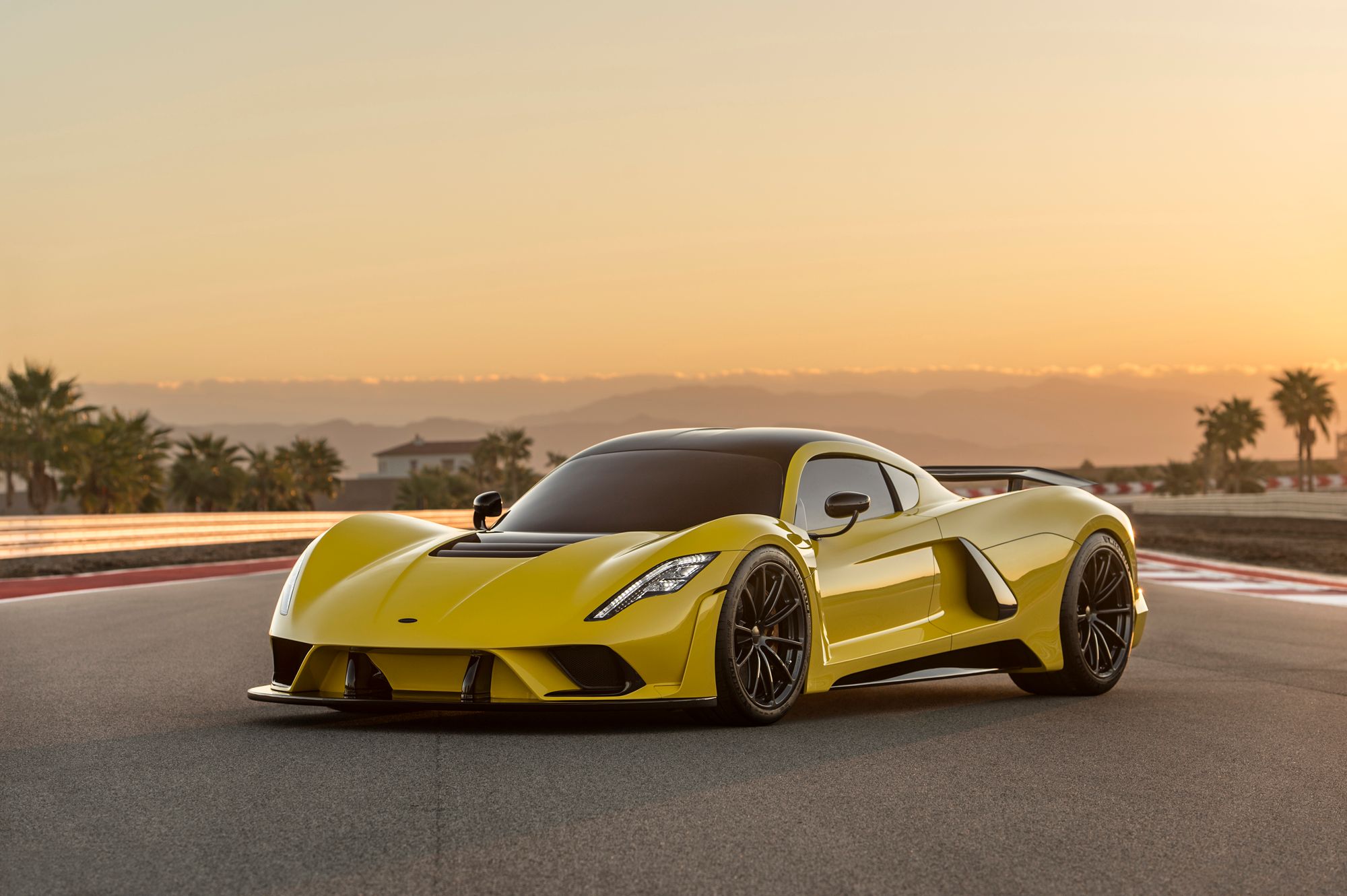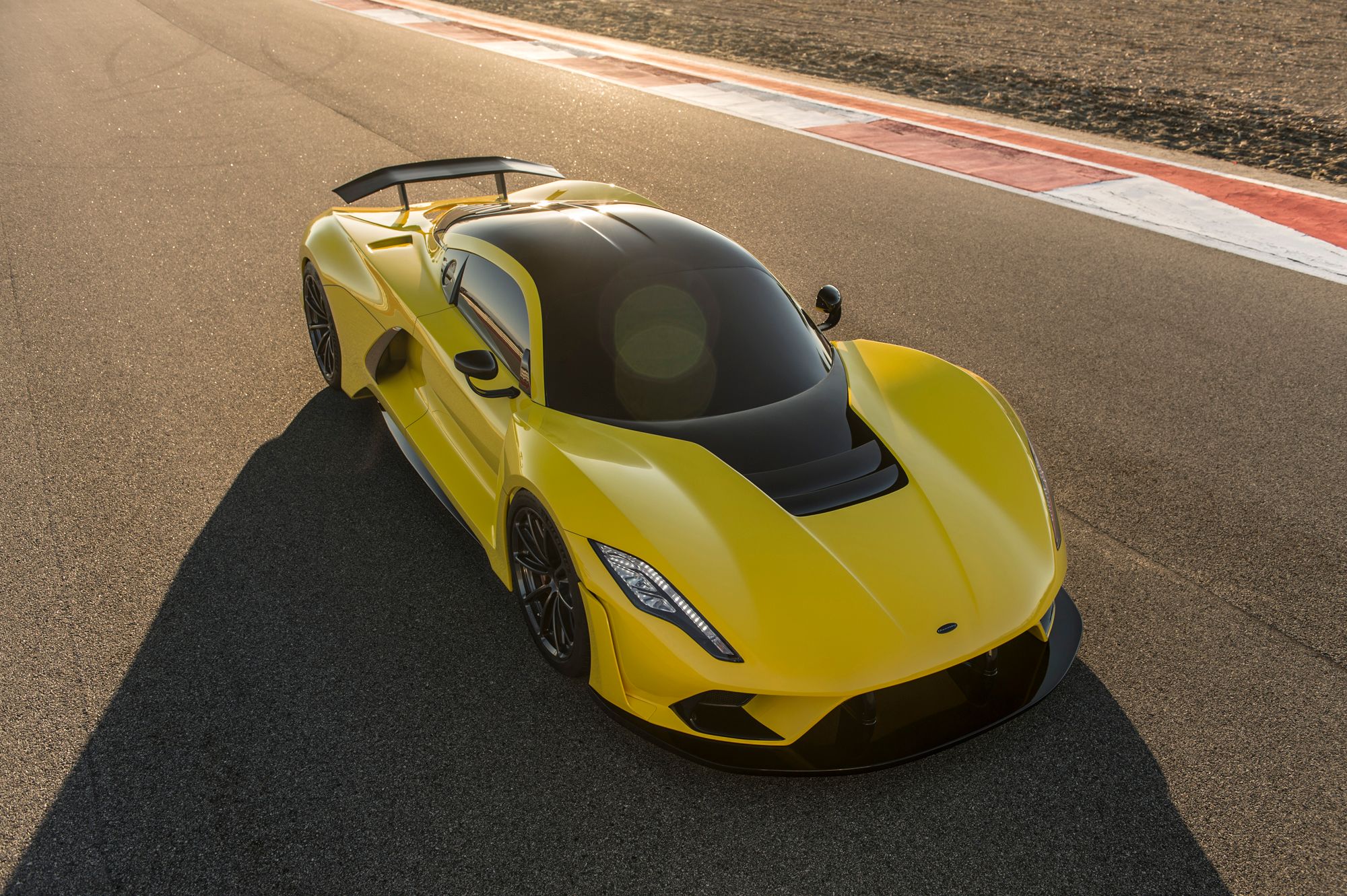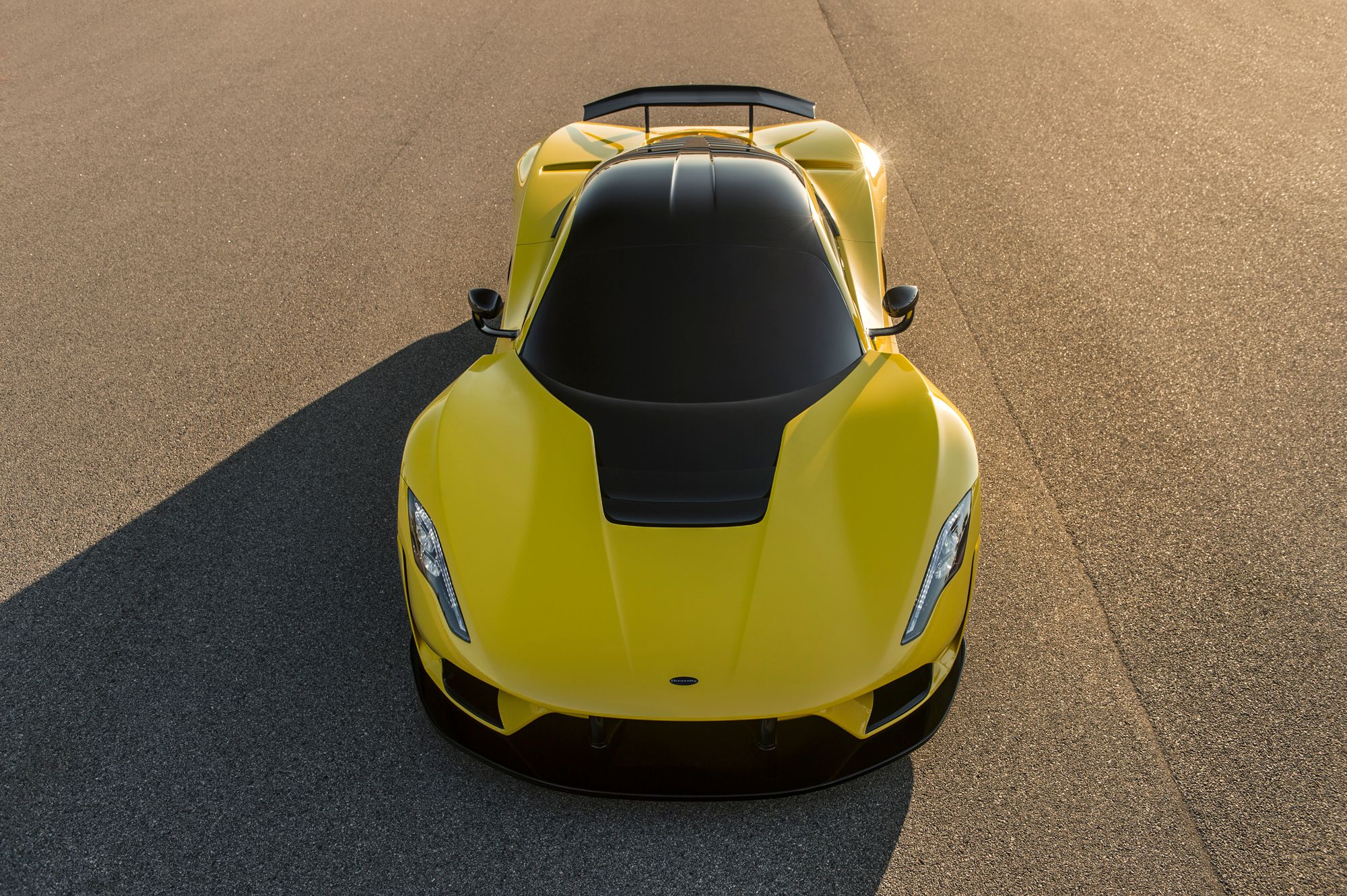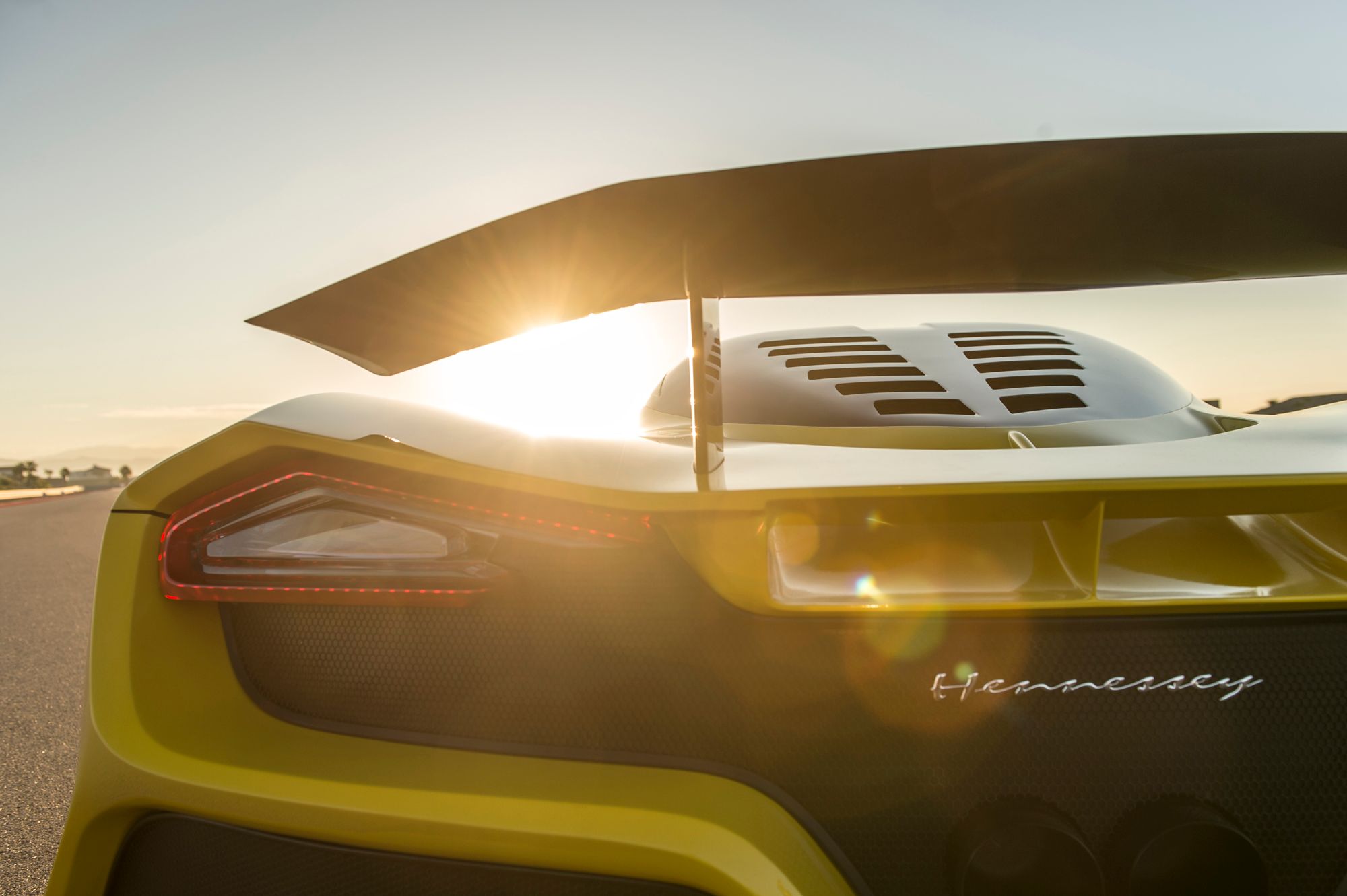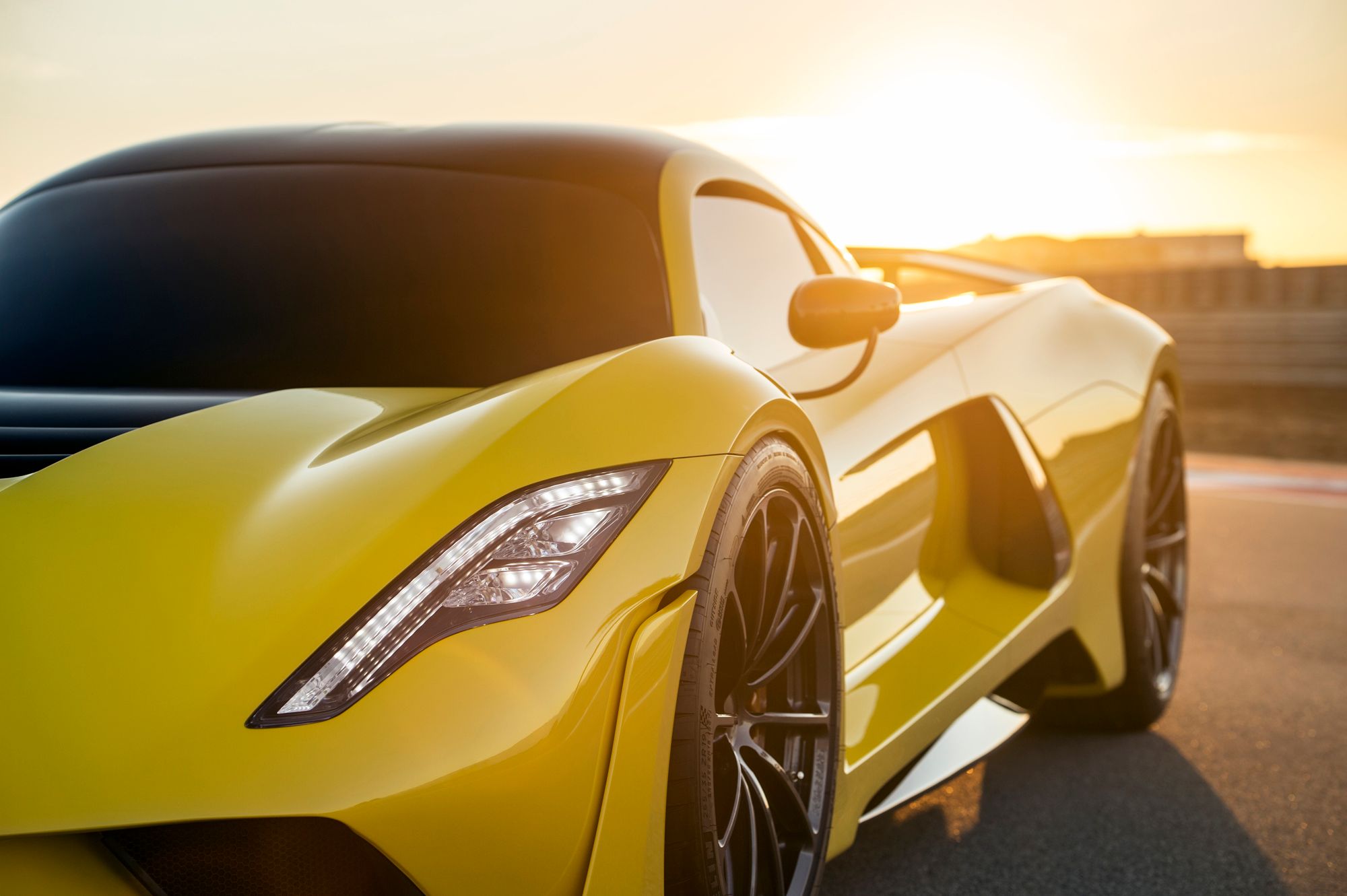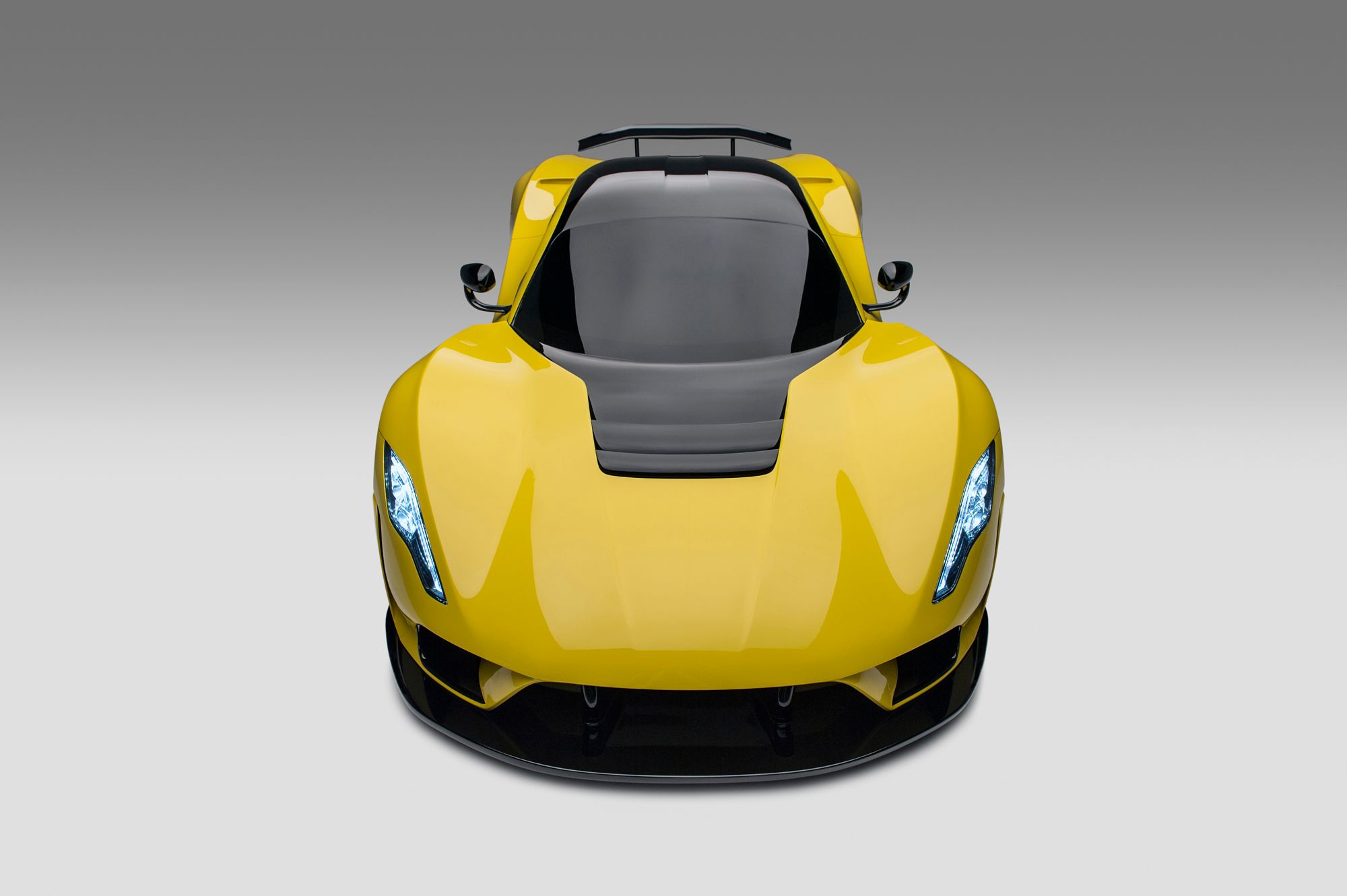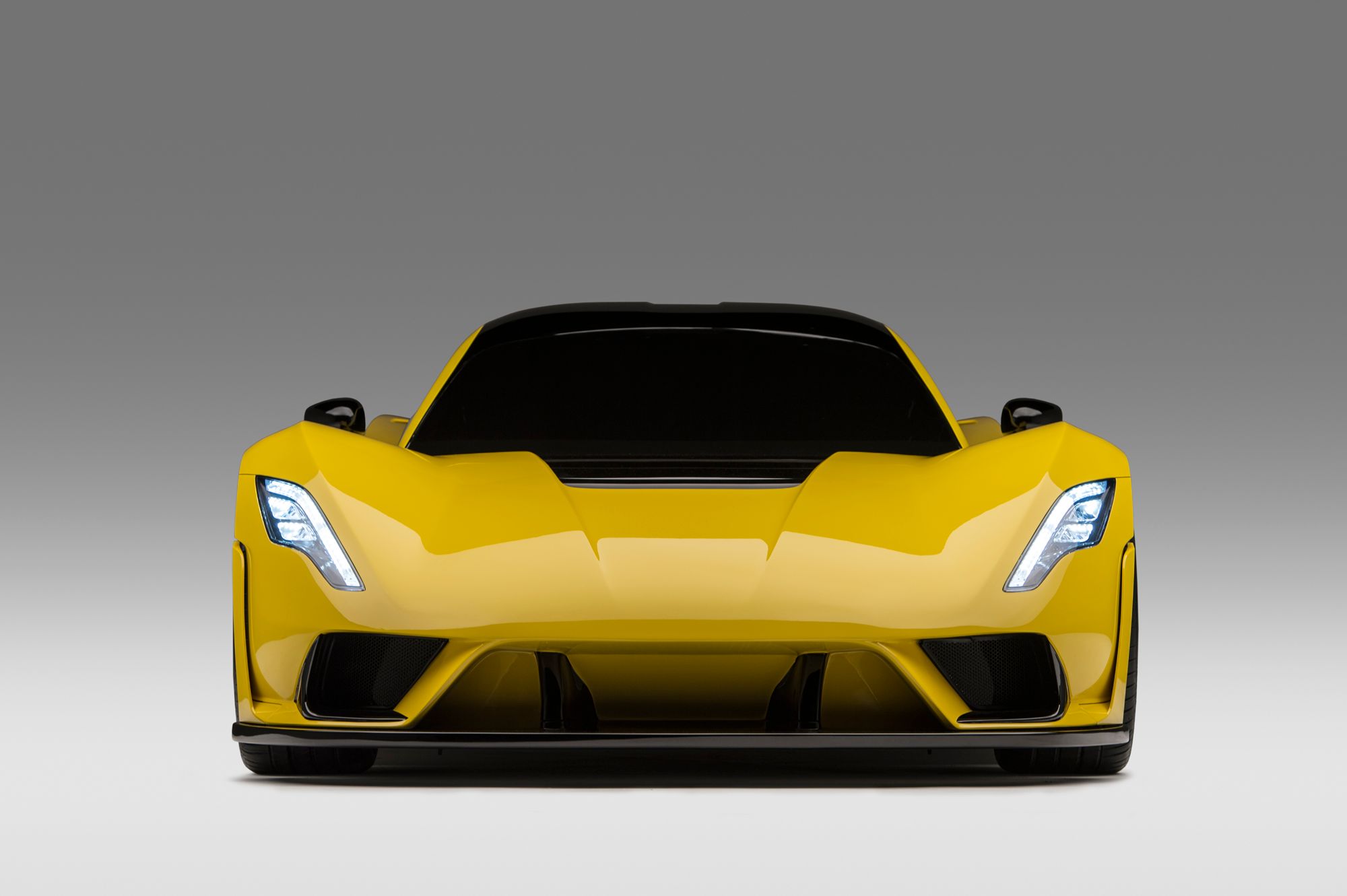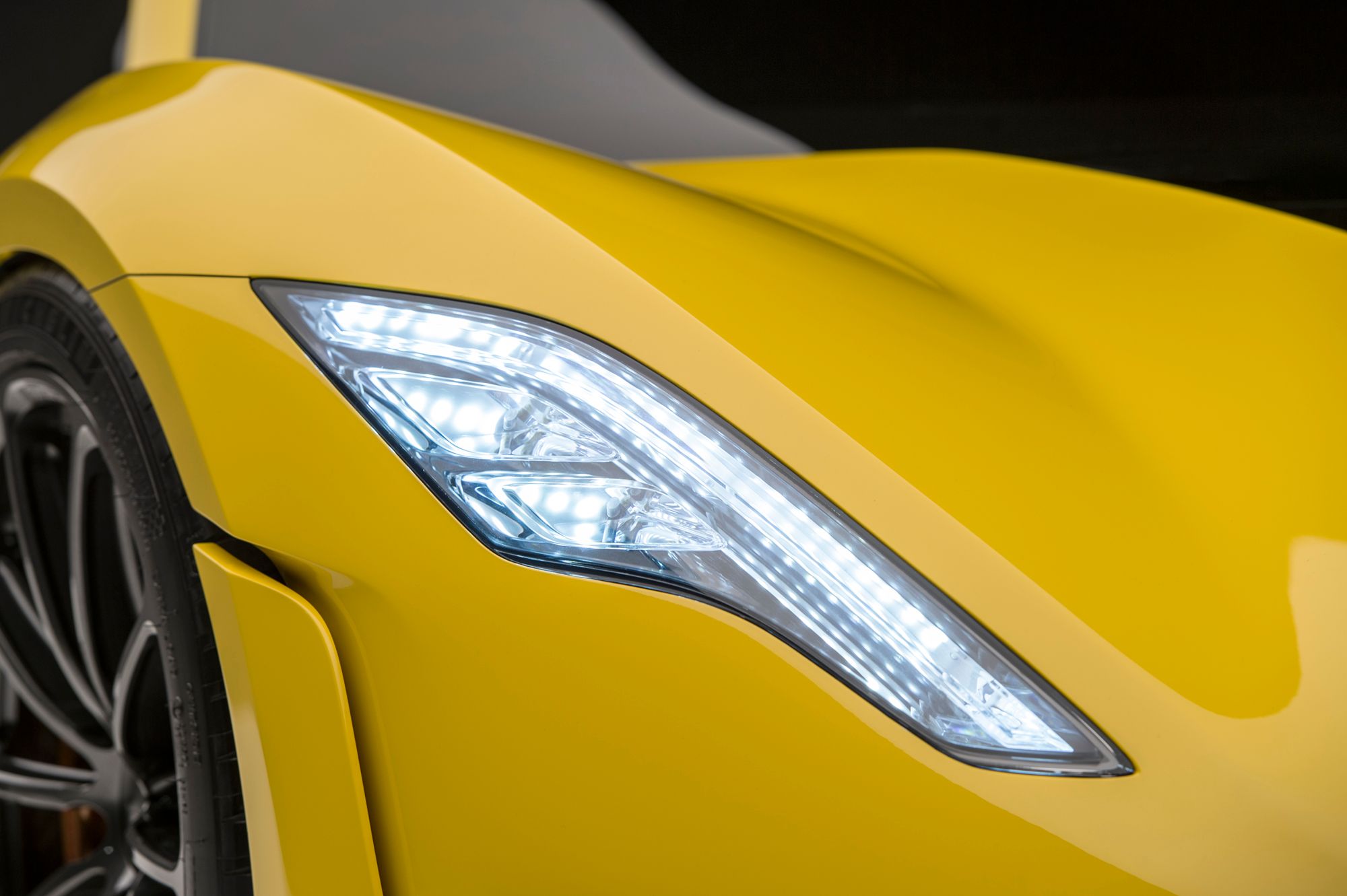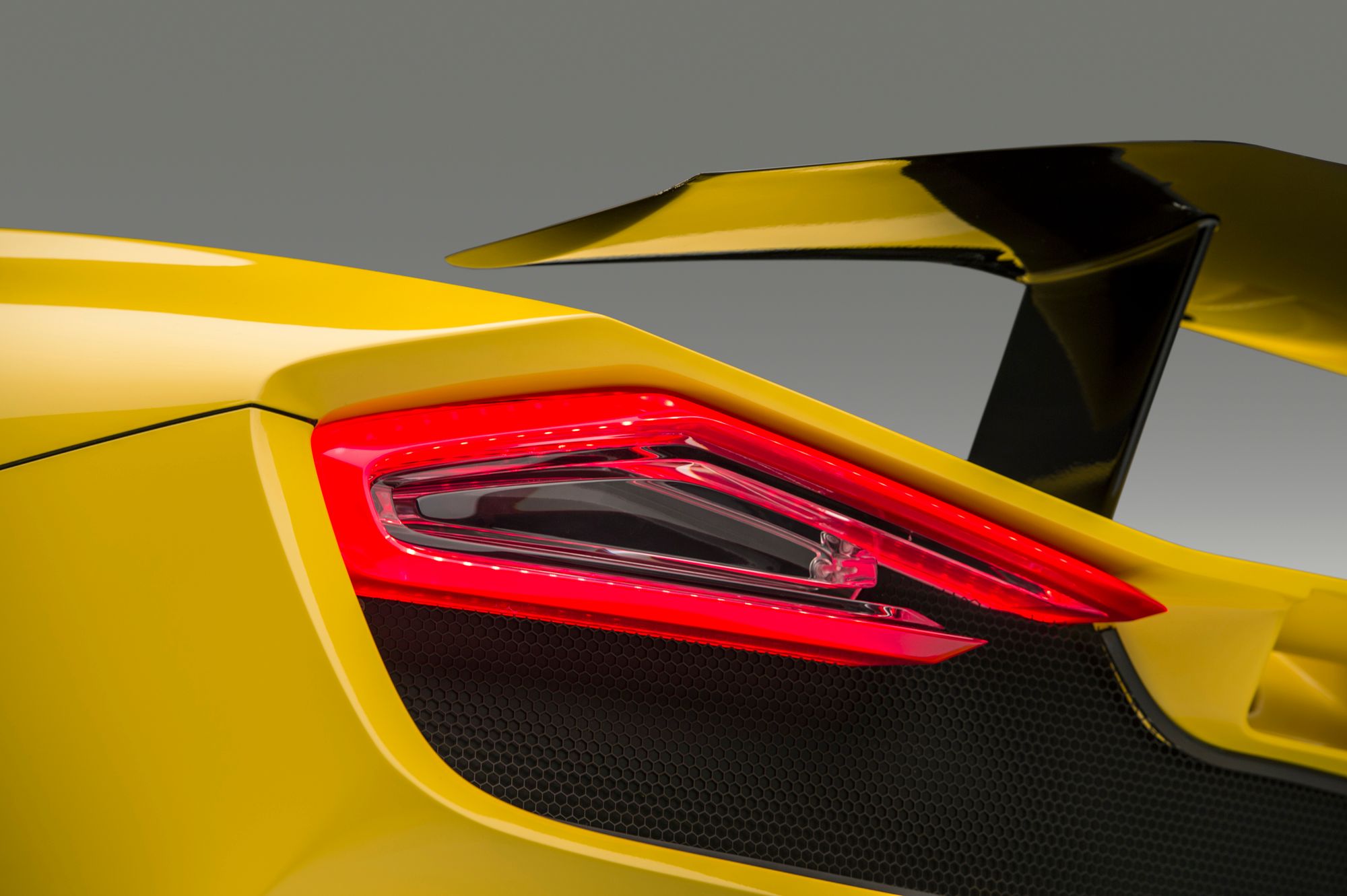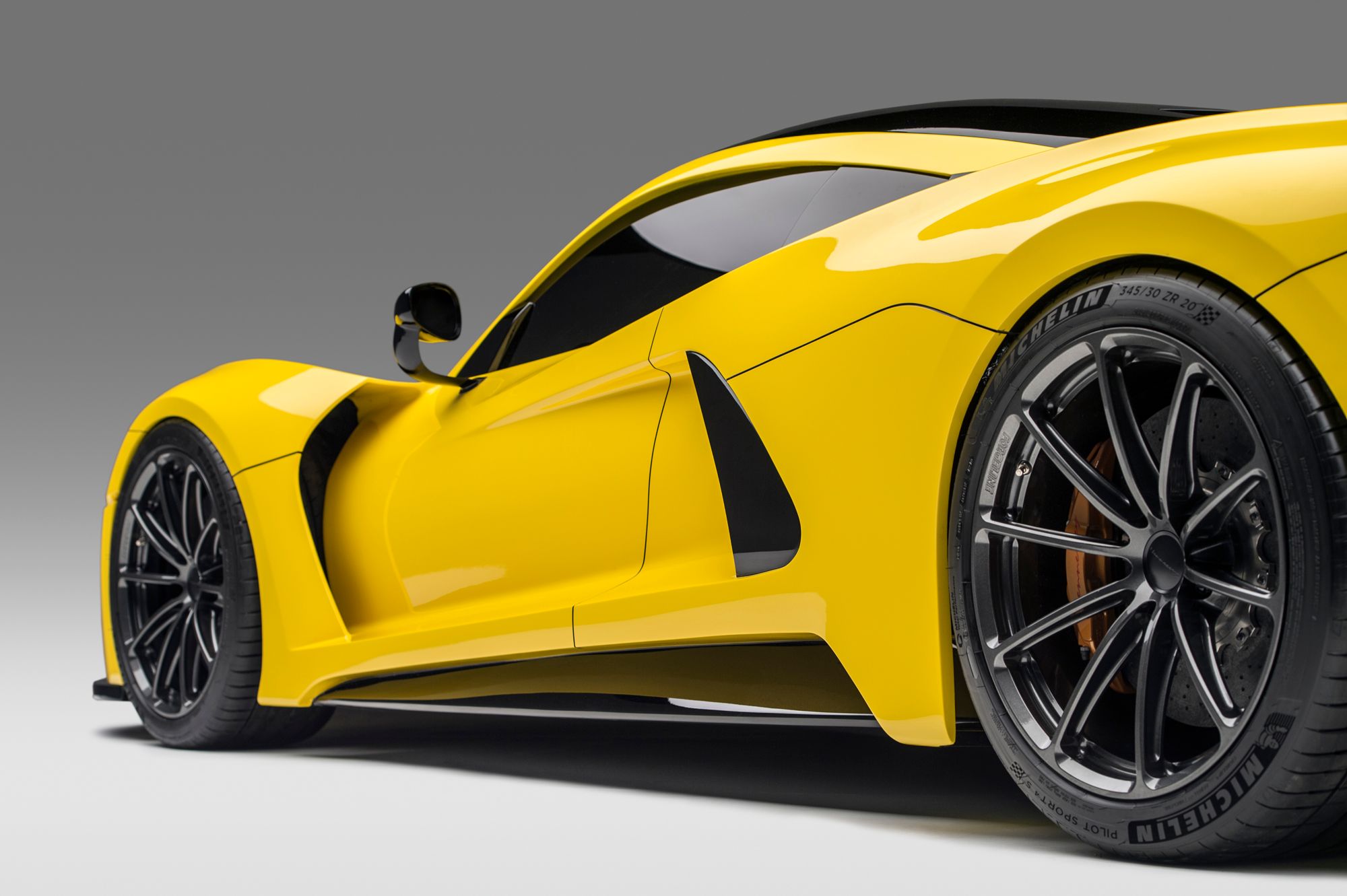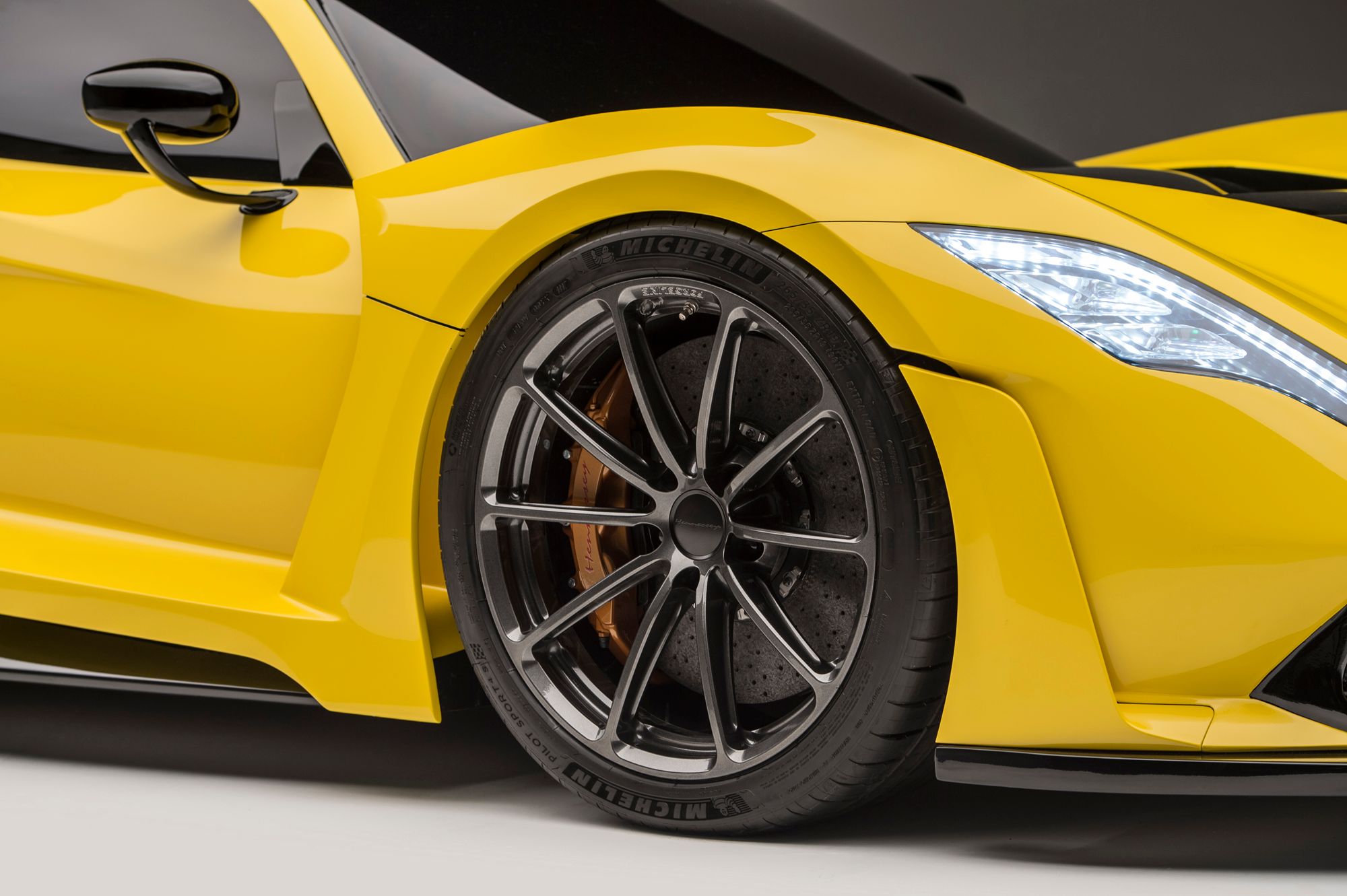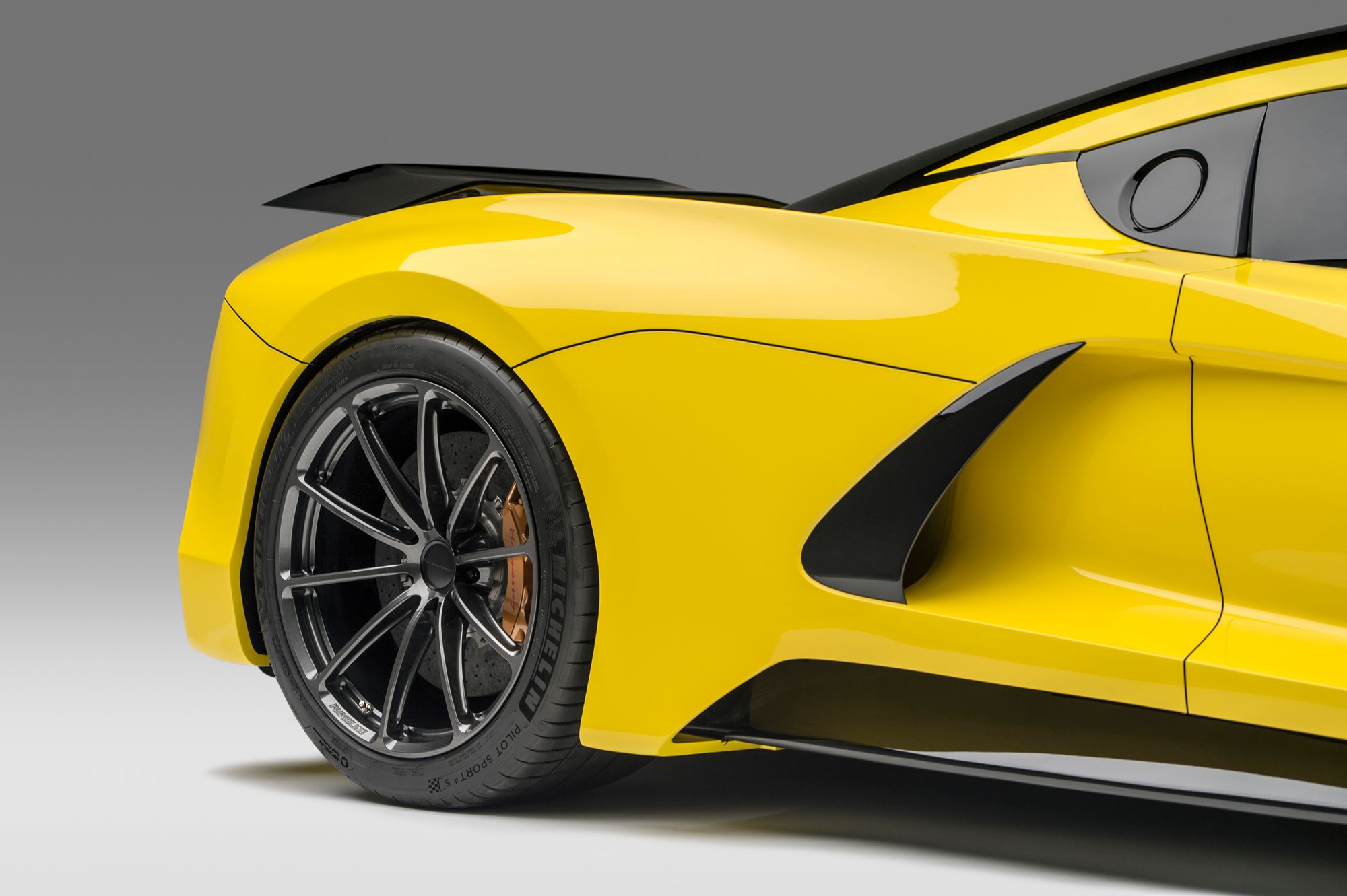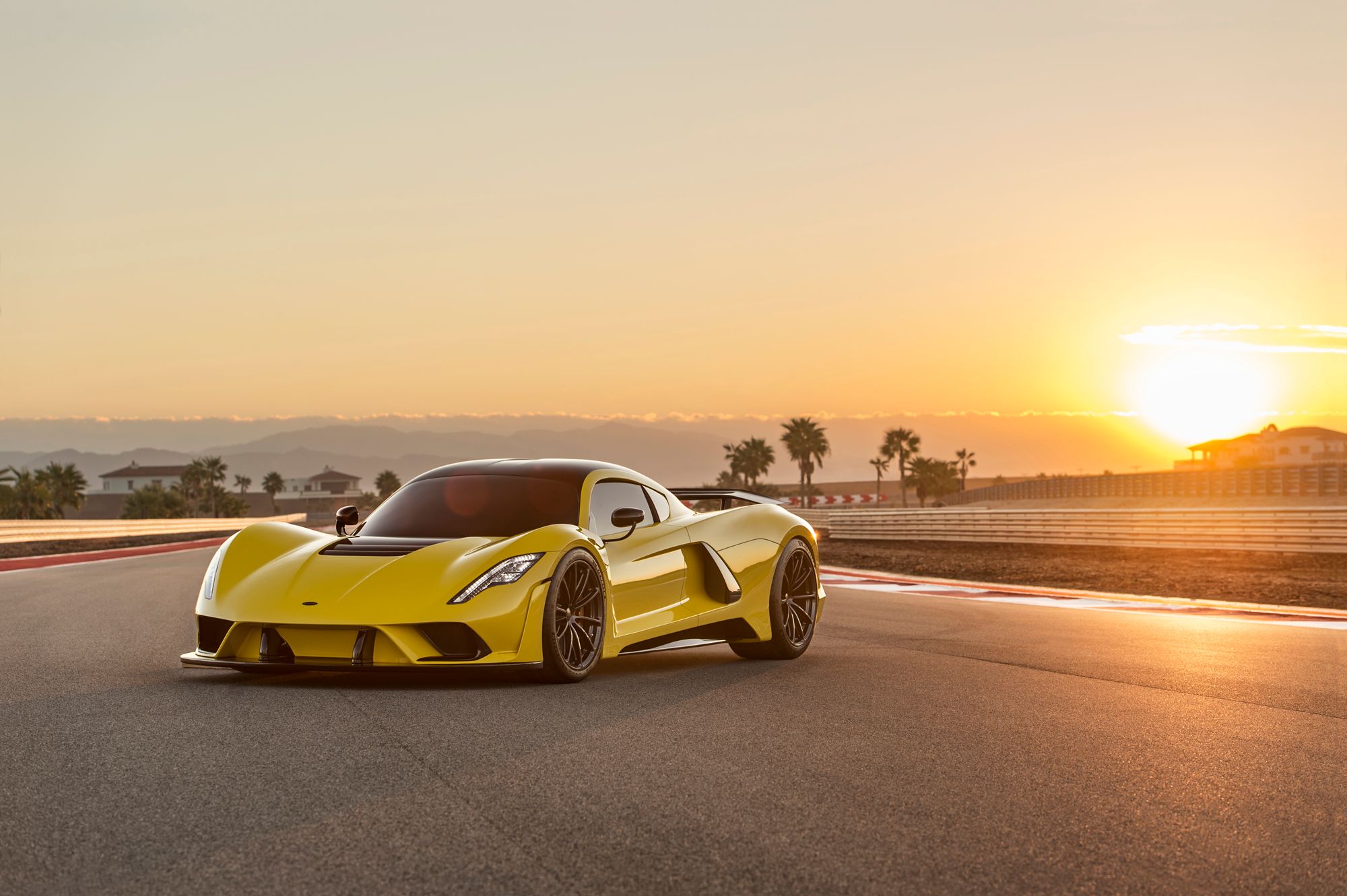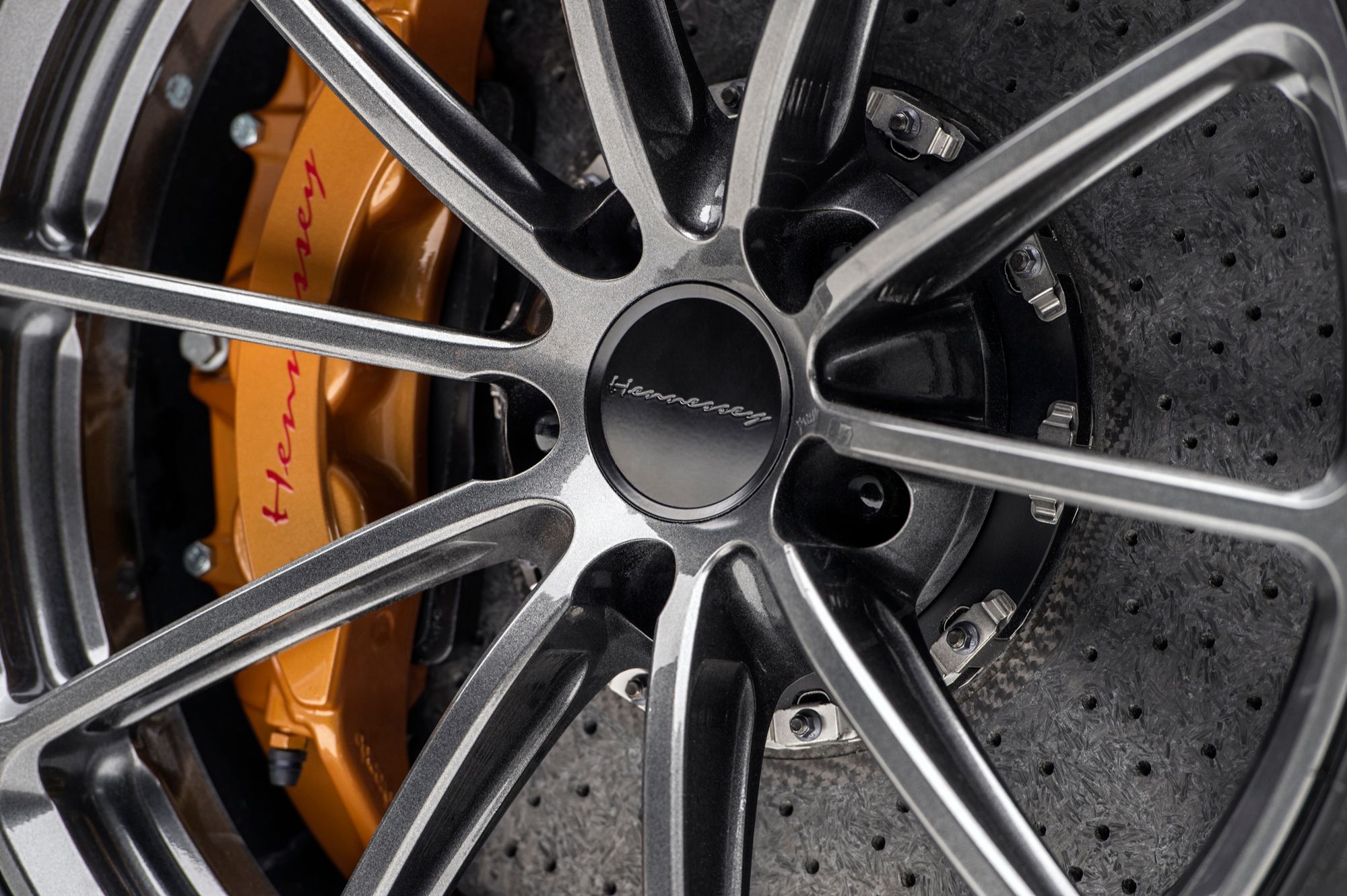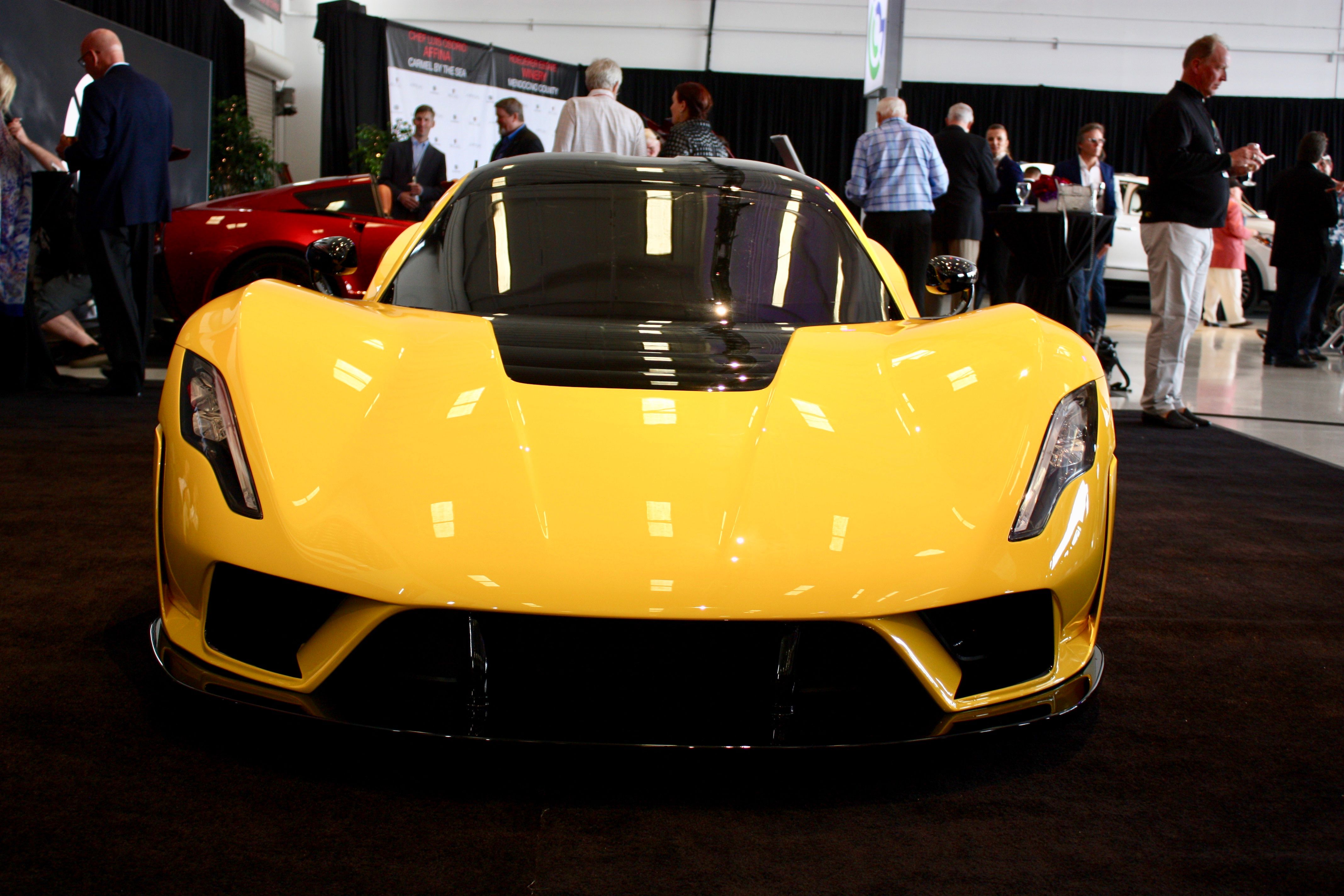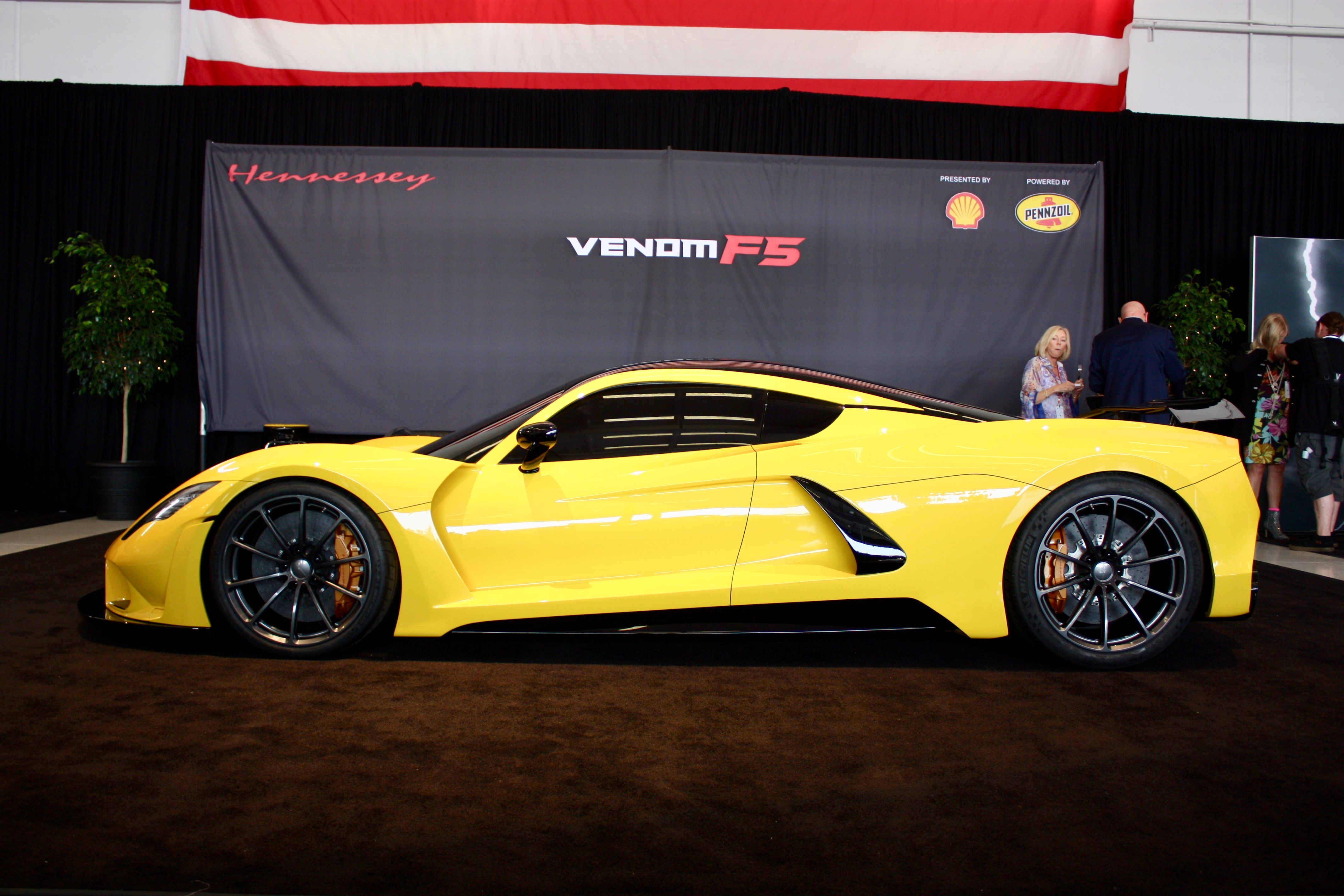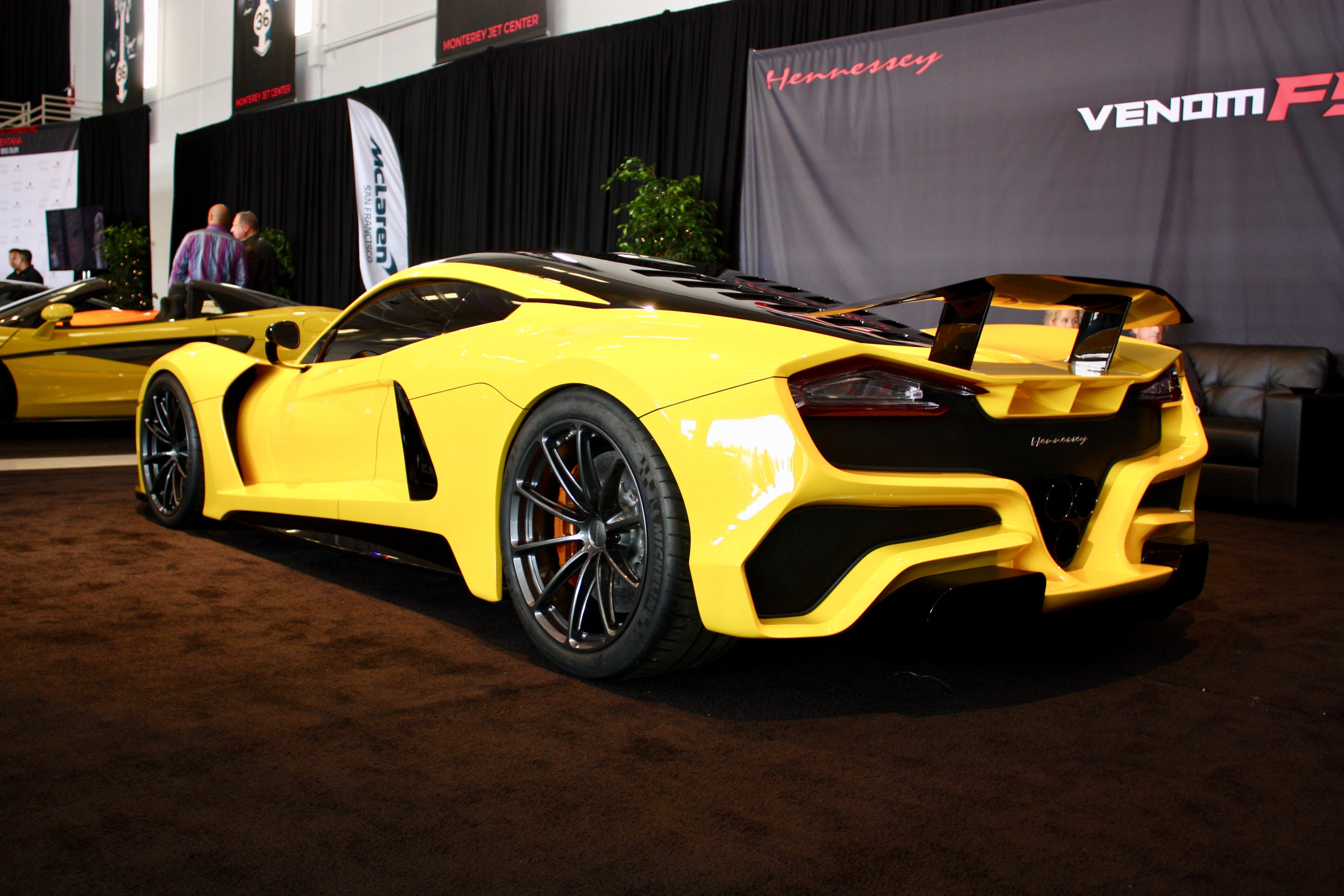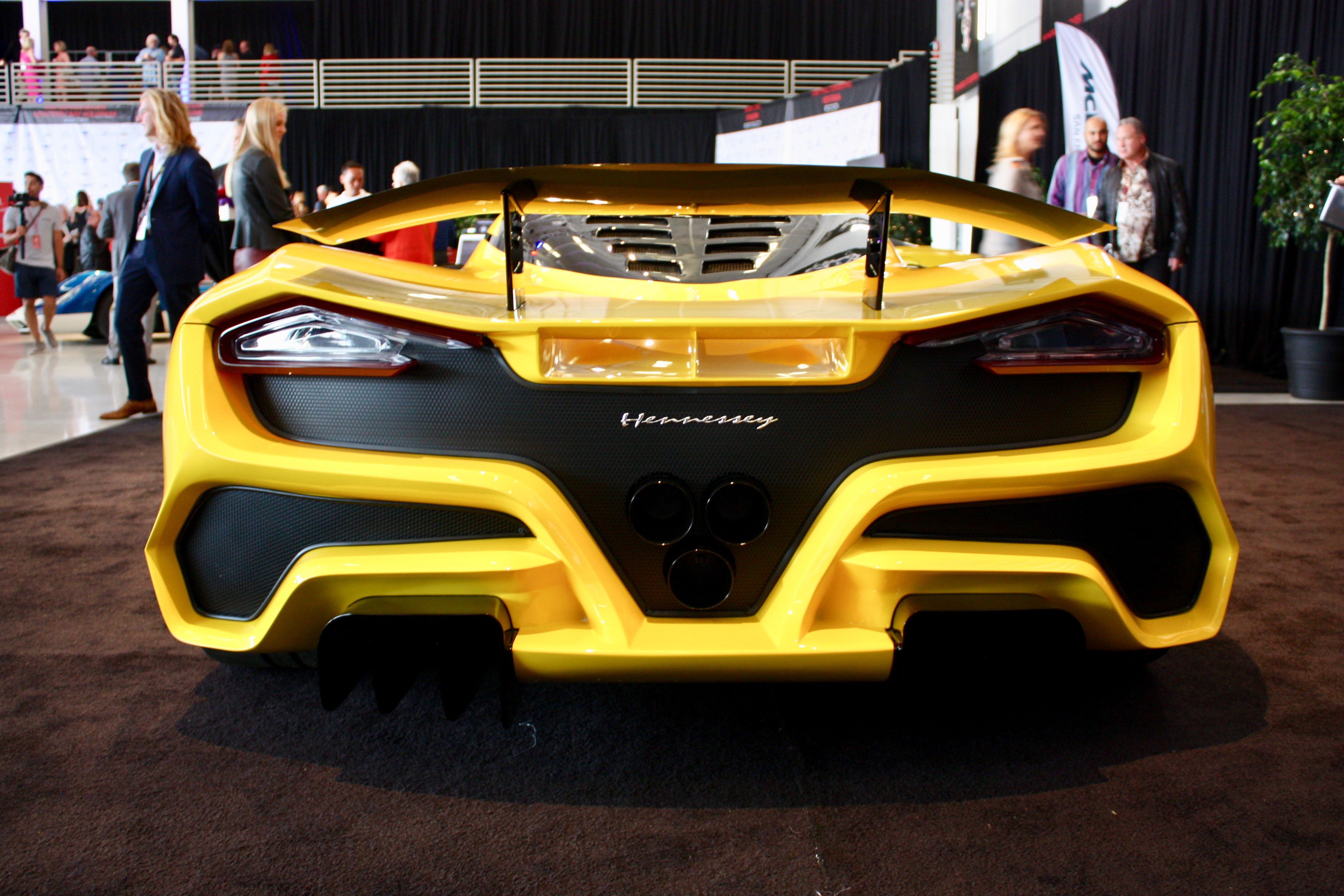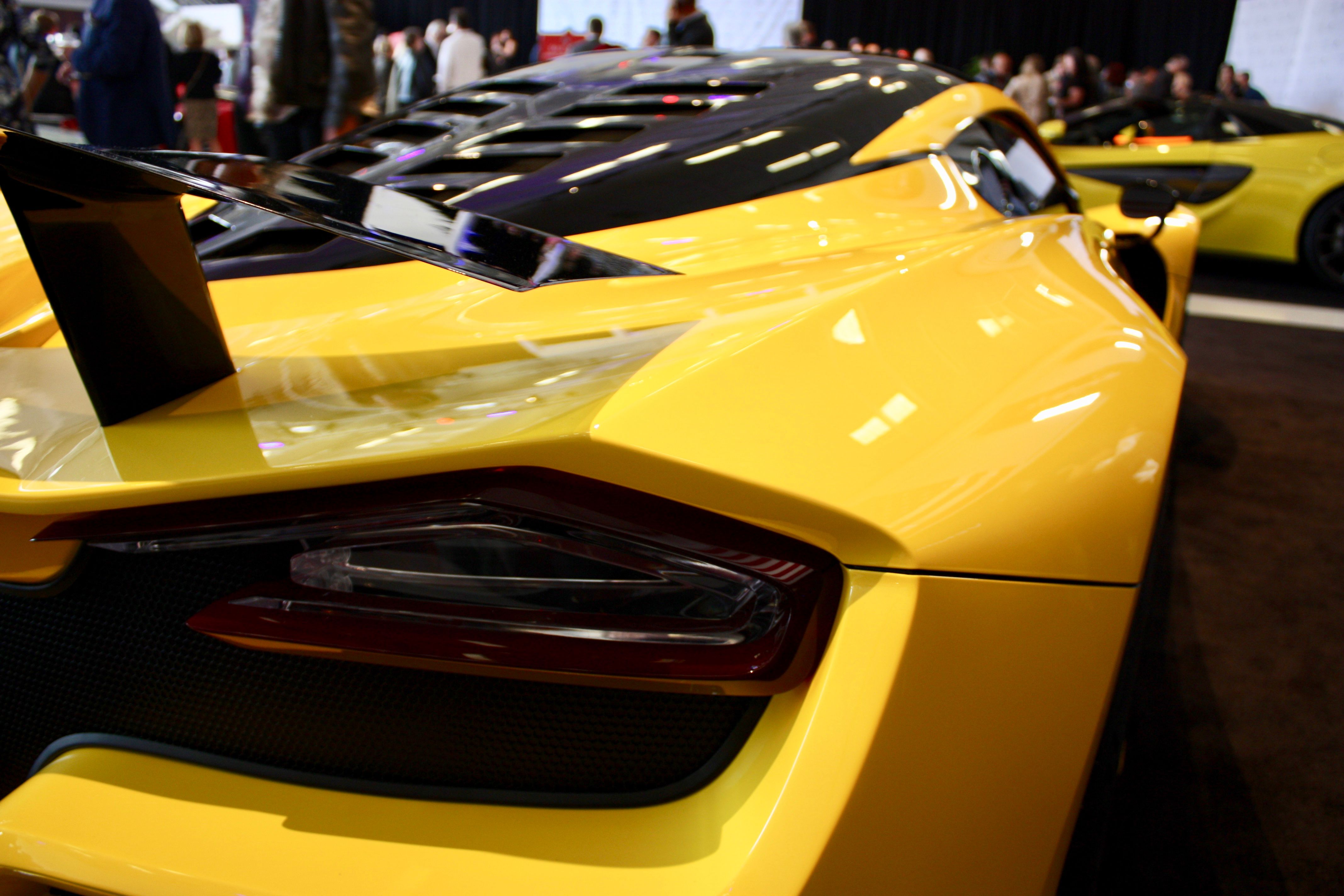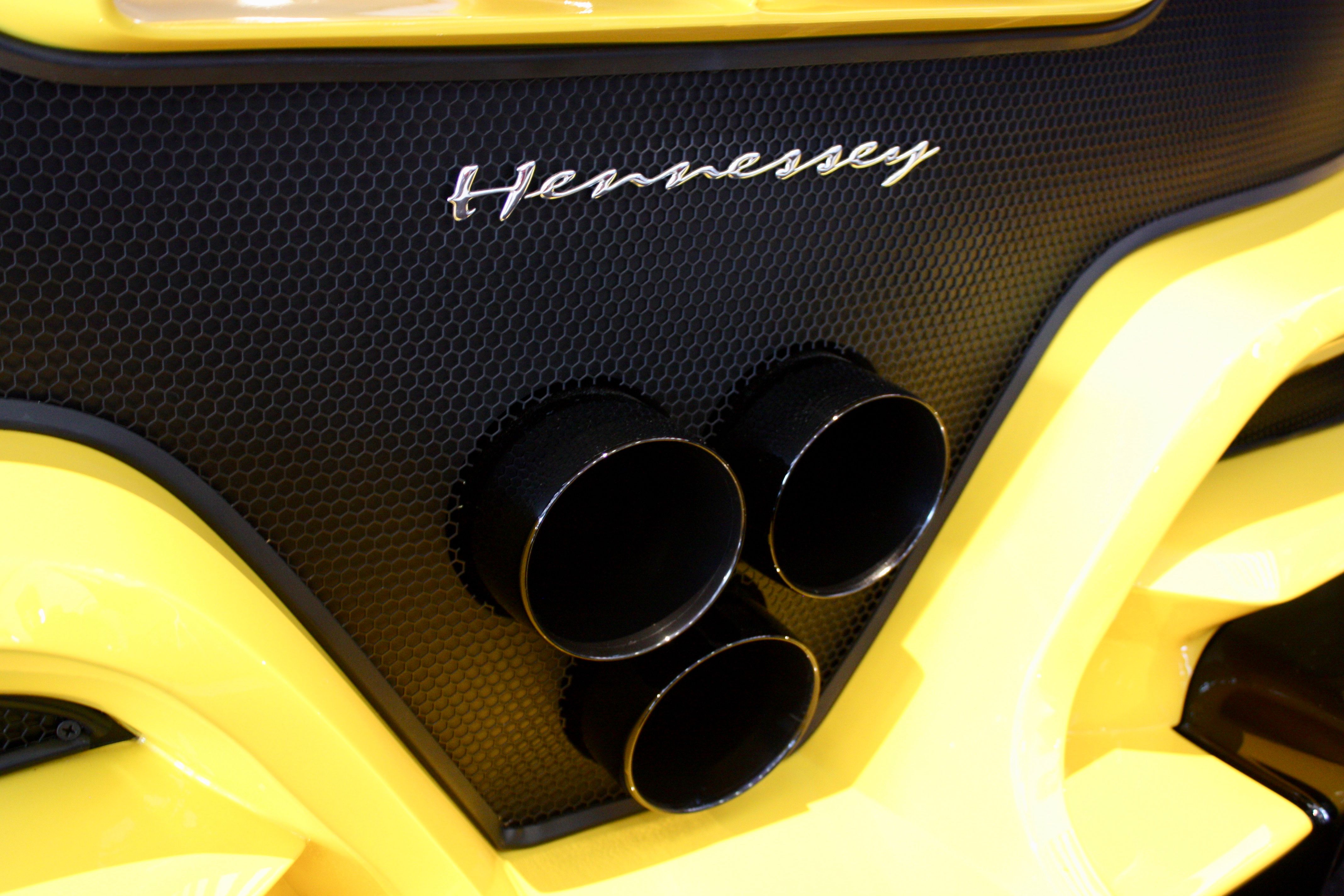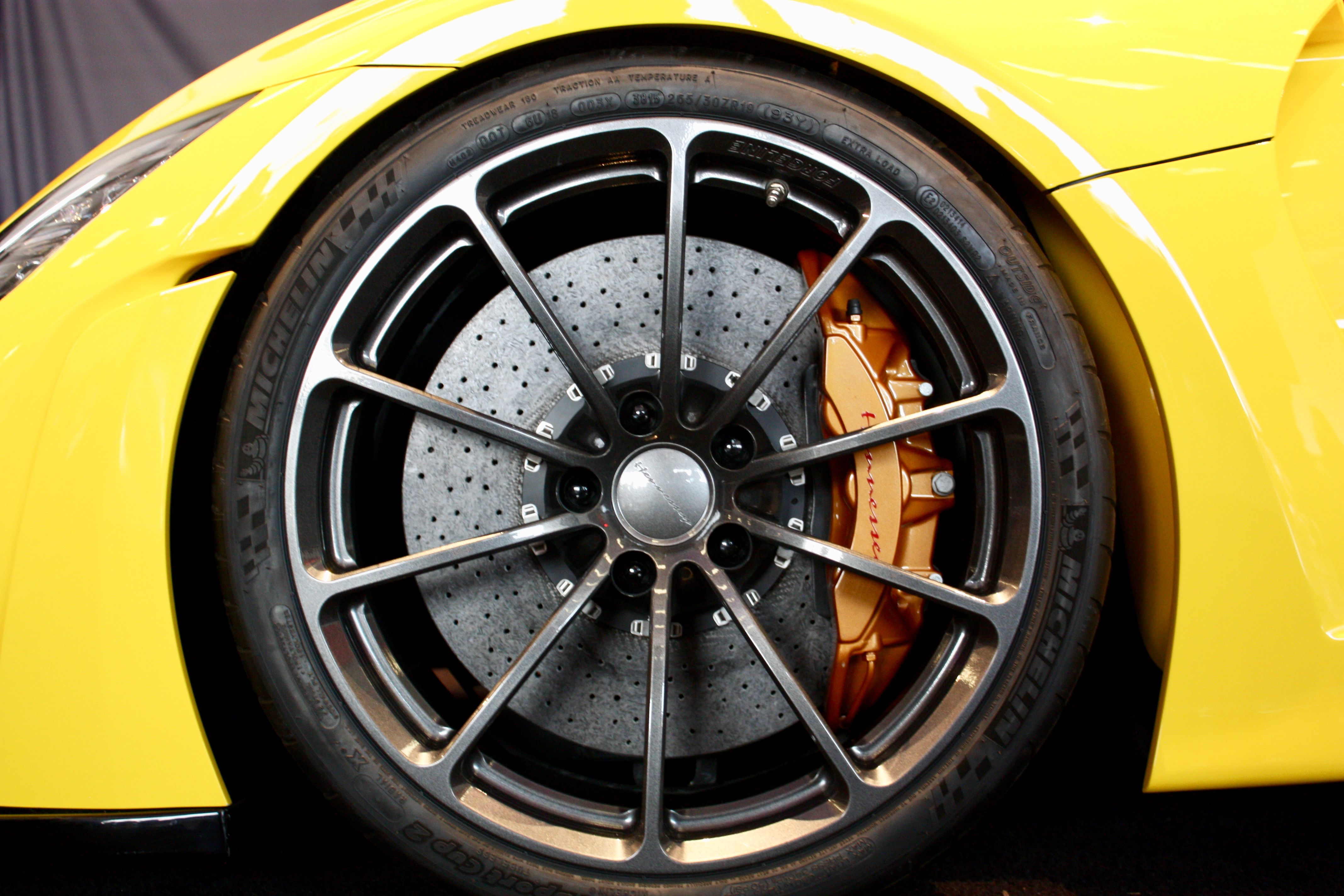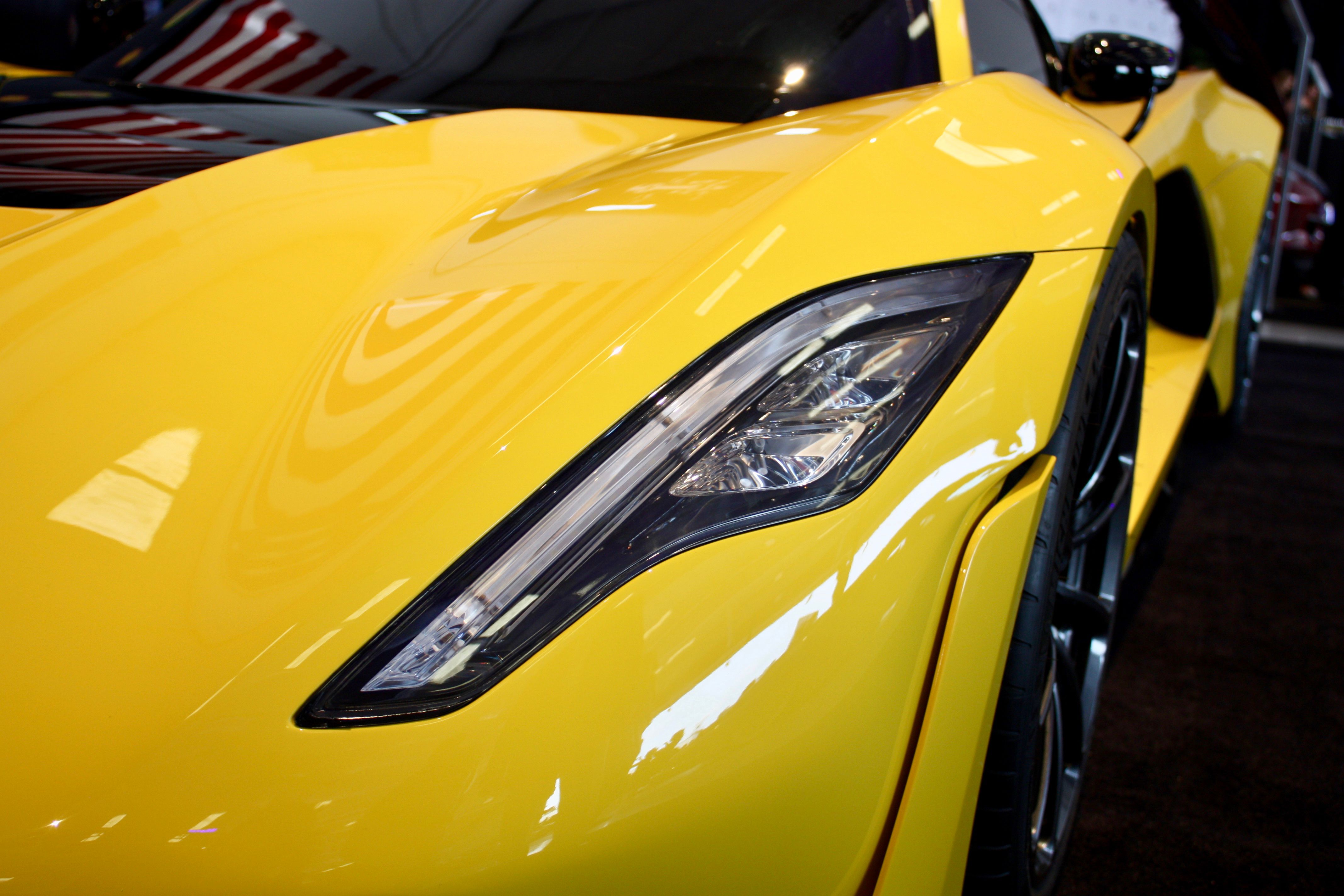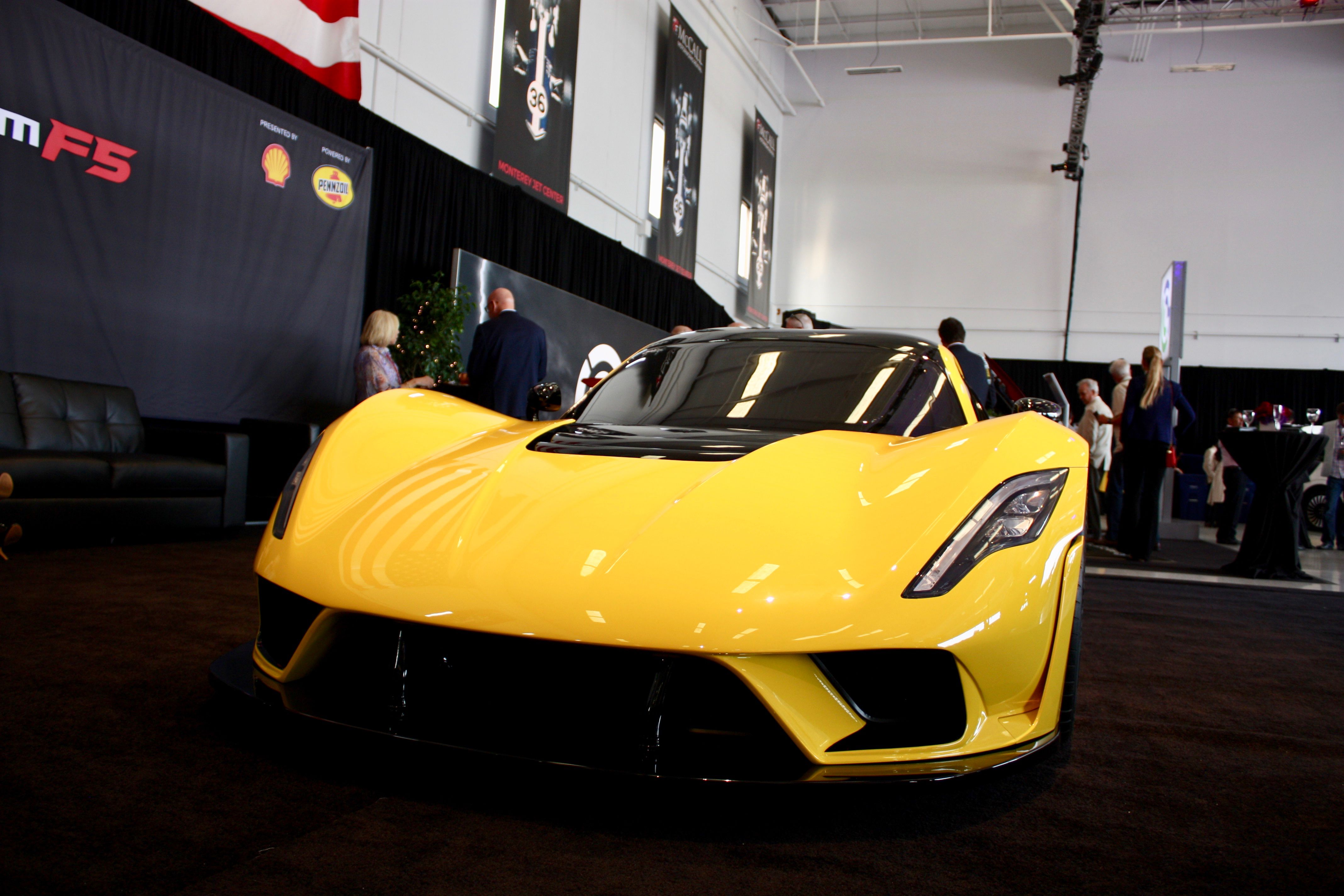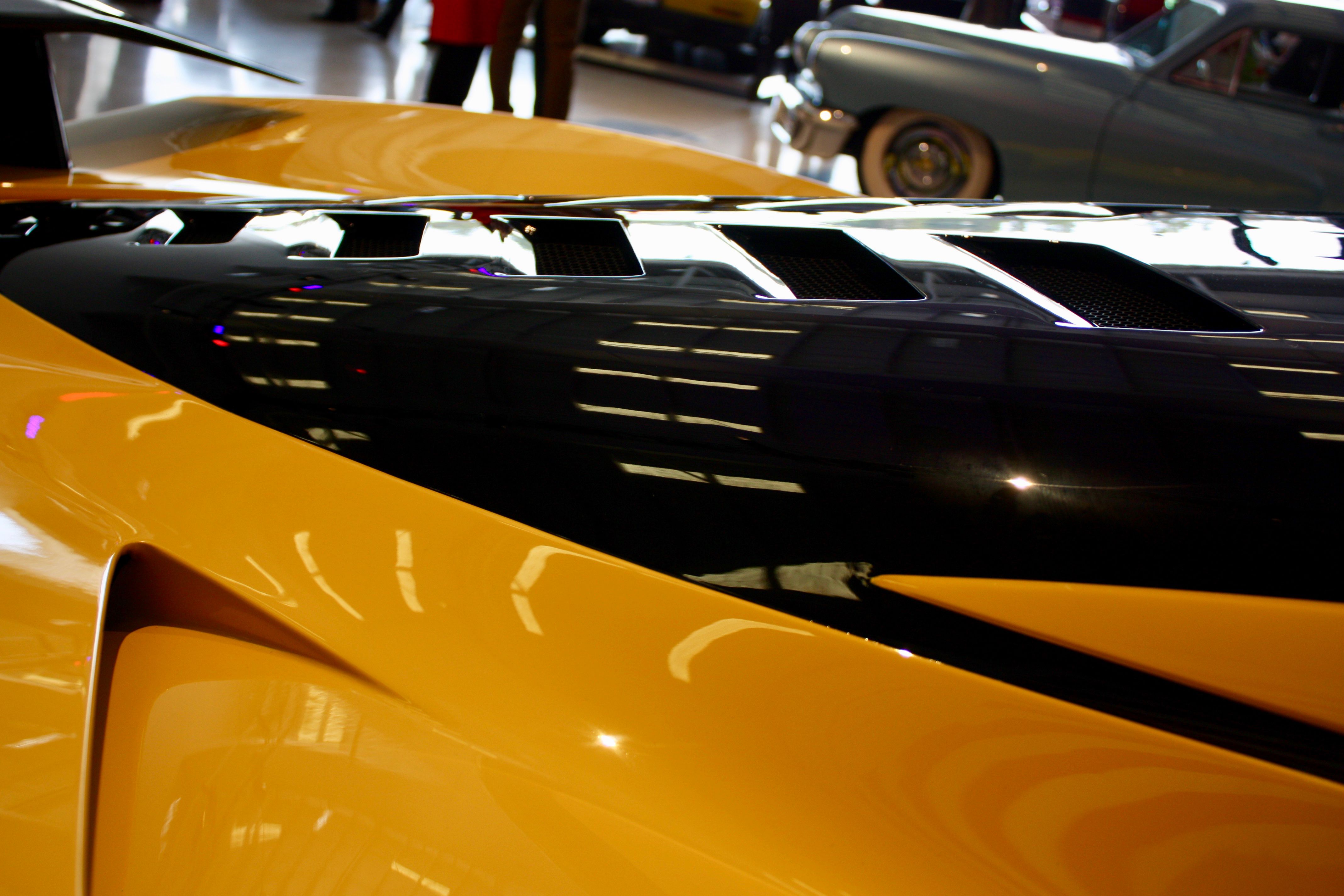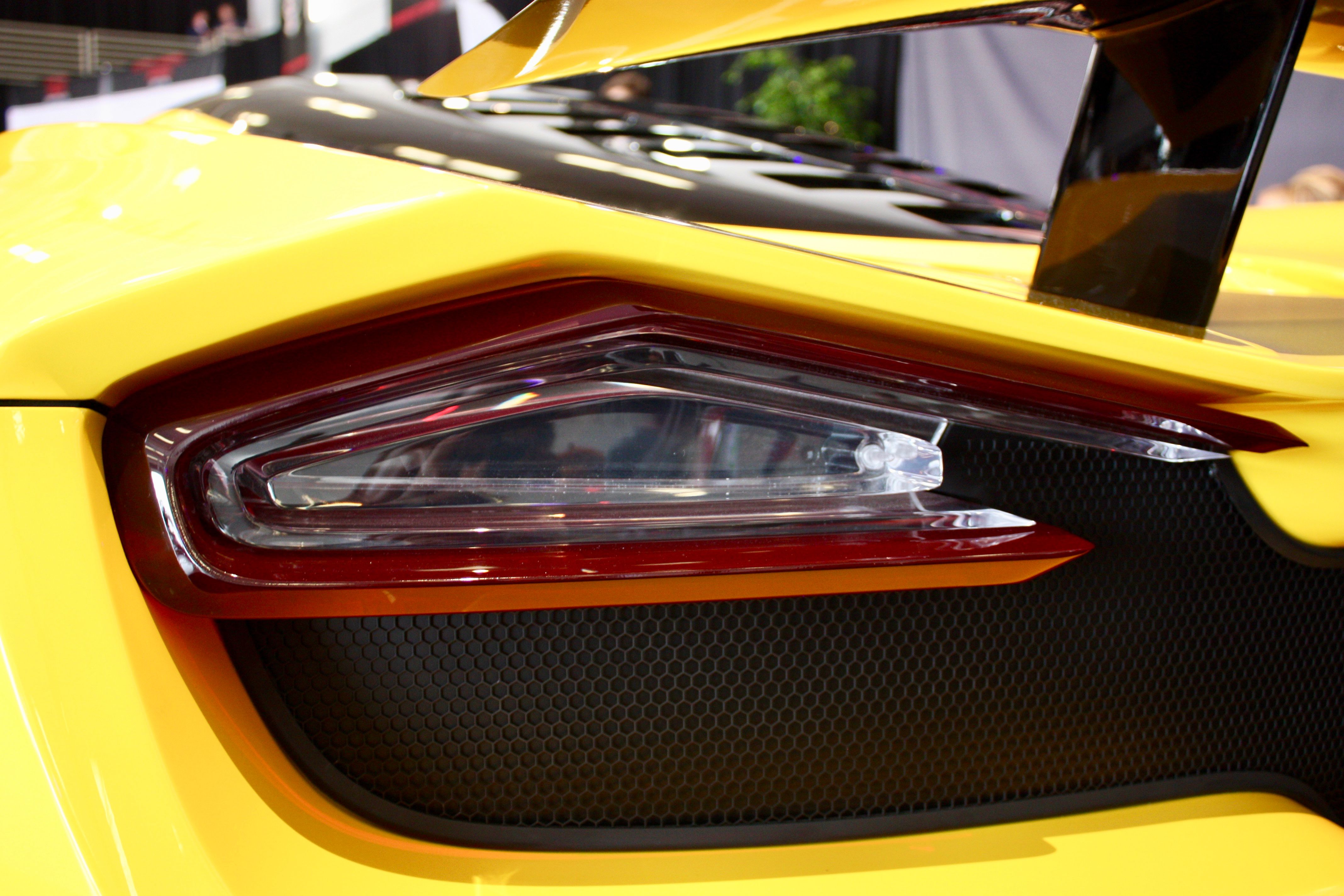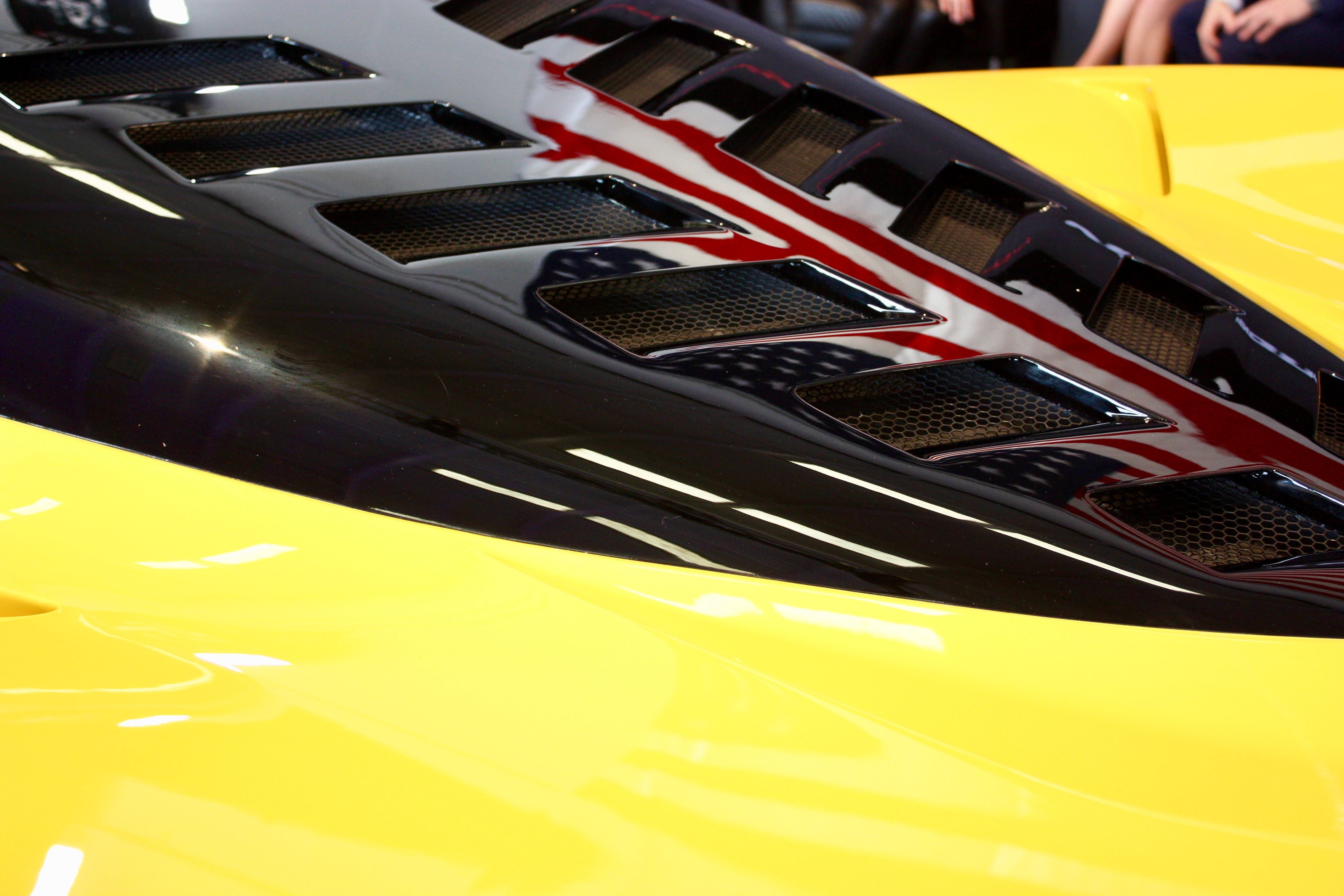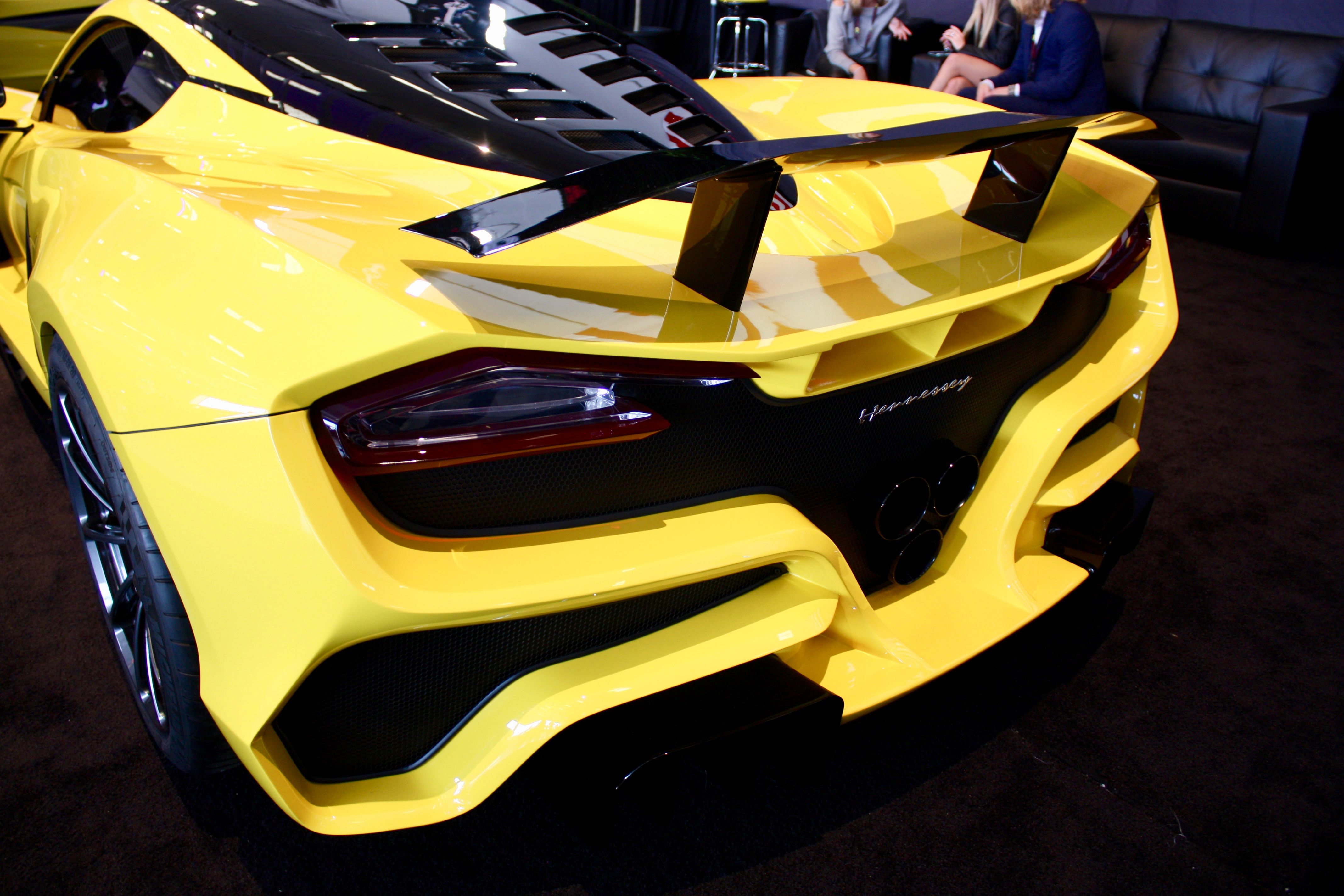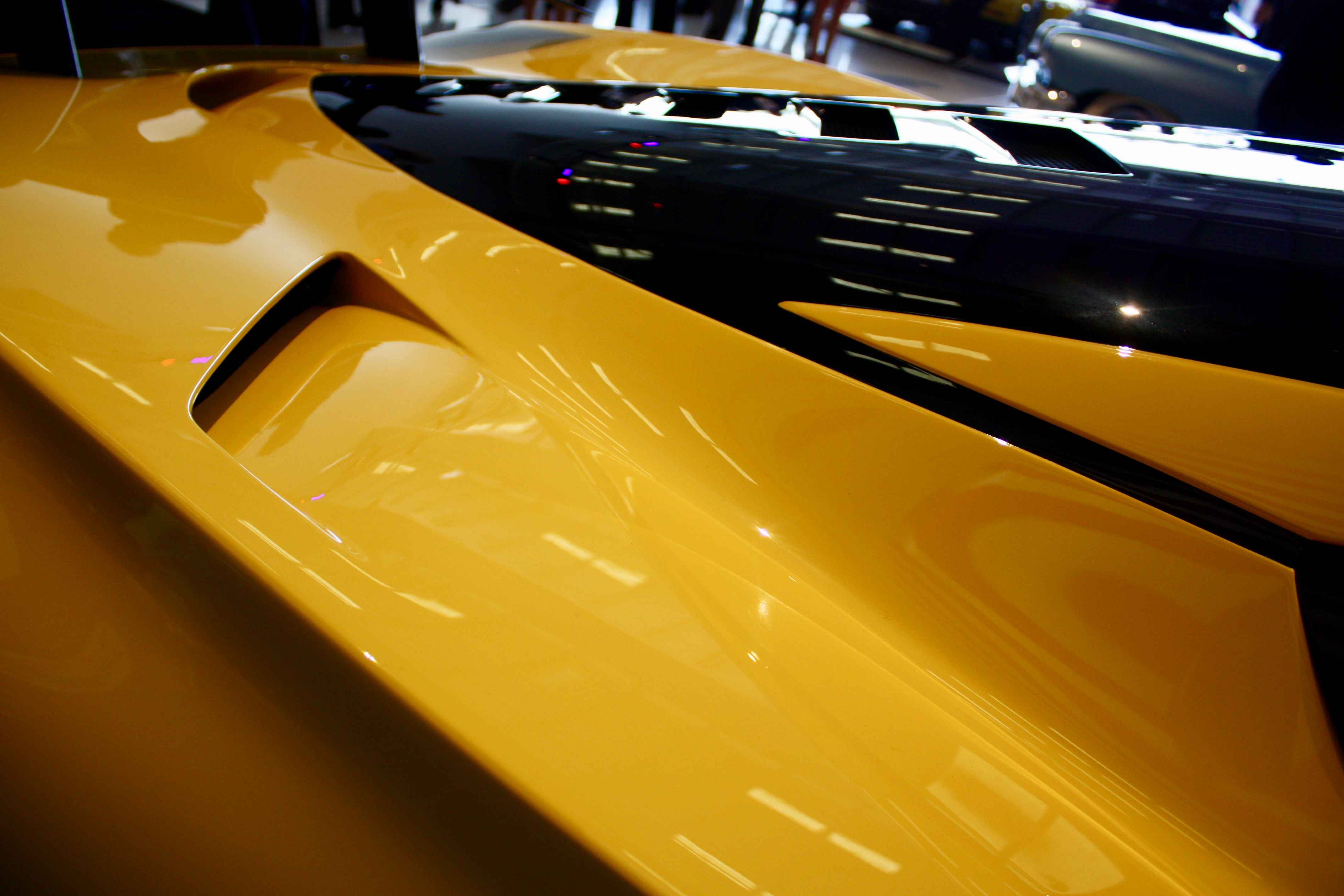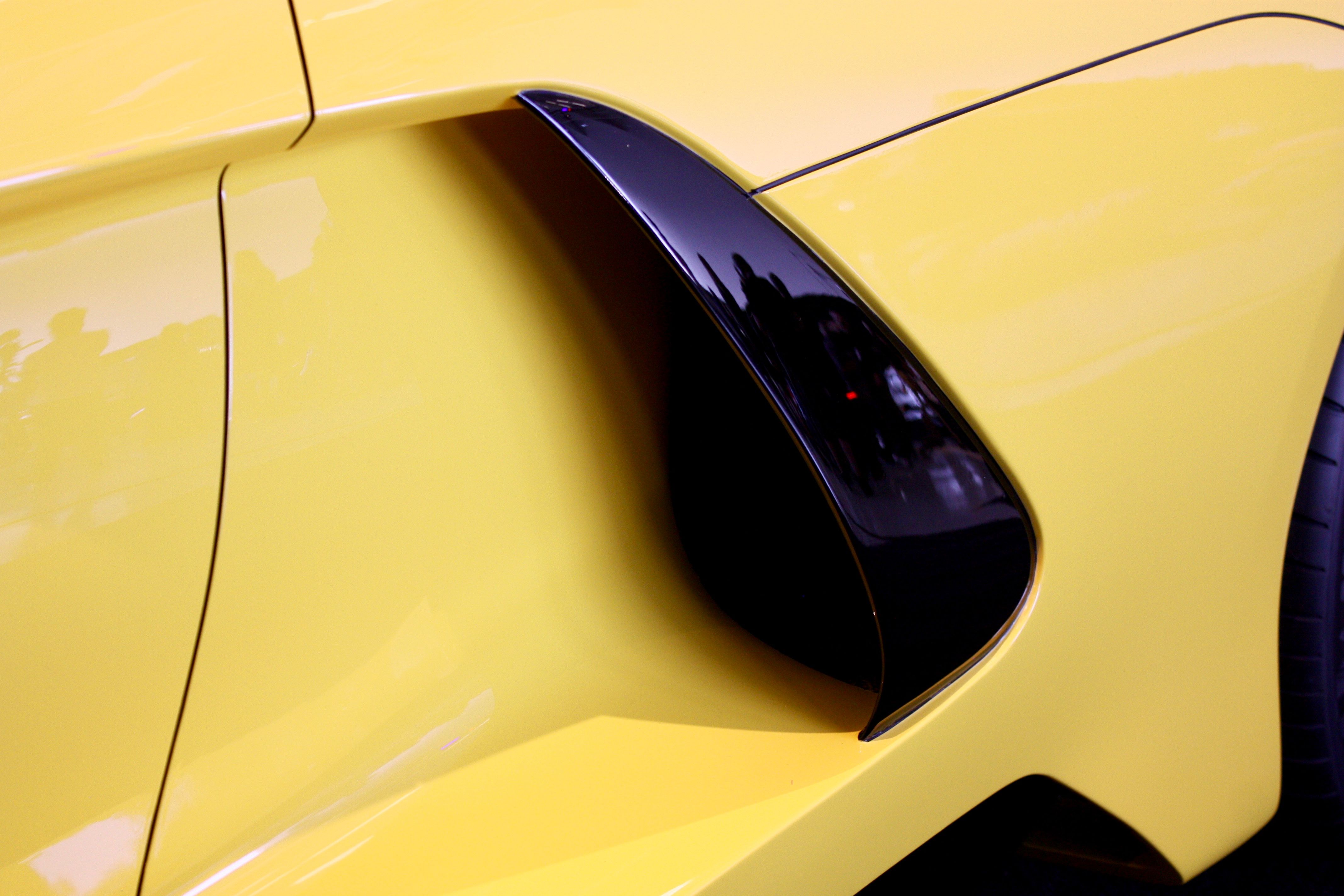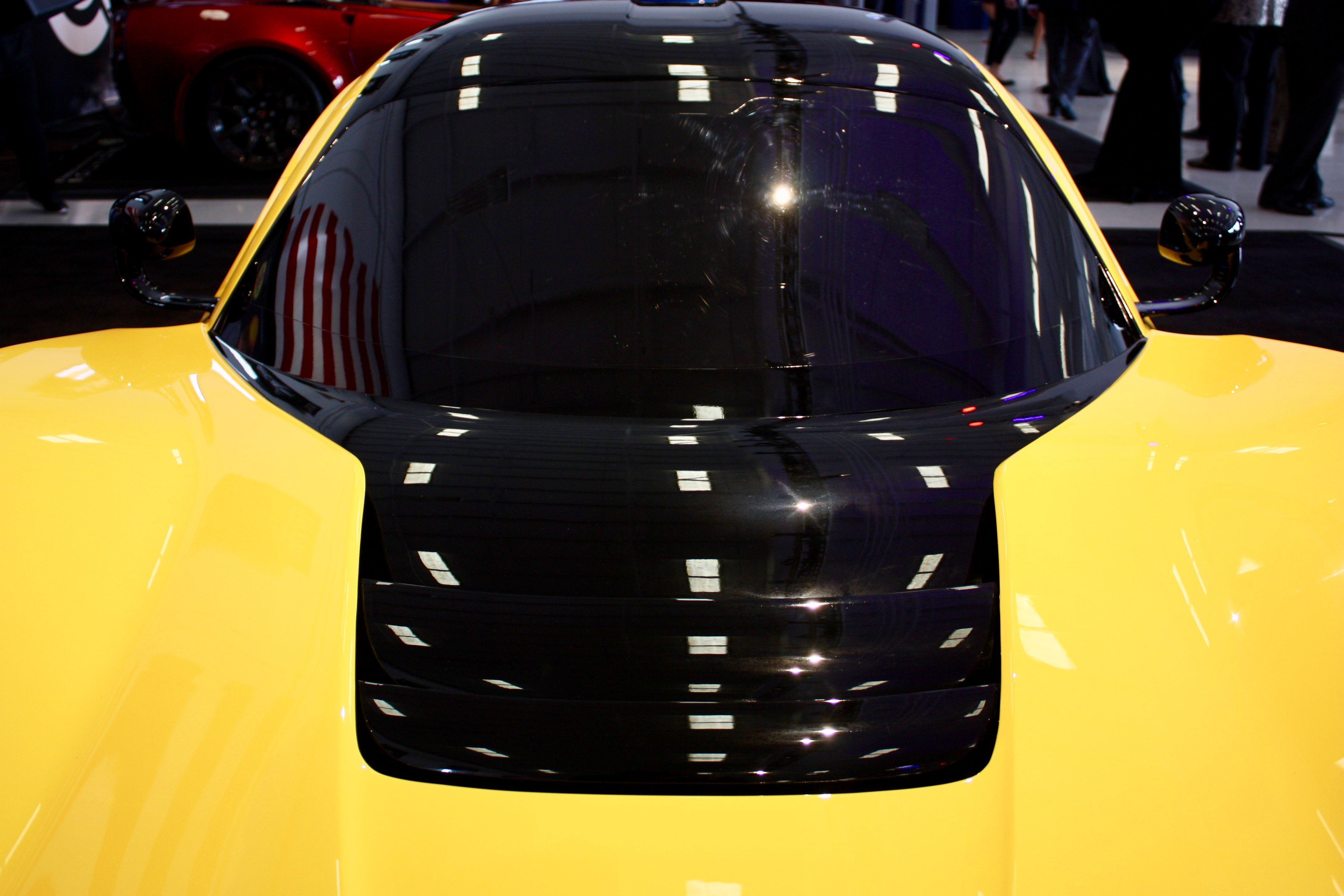We live in some truly incredible times. In the fight for the title of fastest production car in the world, there’s always something new on the horizon, some clever new speed tool that manages to warp what’s possible with four wheels and an engine, setting a new standard by which all other competitors are judged. This is exactly that, the latest and greatest in the world of hypercars. Recently revealed in Las Vegas at SEMA, the Venom F5 is a follow-up to Hennessey’s first-gen Venom GT from 2011, offered as a clean-slate approach to the problem of going faster than all the rest. Now breaking cover after four years in development, the Venom F5 is built in Texas and touts itself as America’s Hypercar.
The F5 name is nod to the most powerful tornadoes rated on the Fujita scale, and for good reason – low weight, low drag, and a Texas-sized dose of turbocharged V-8 ponies at the rear wheels combine for a top speed predicted to eclipse 300 mph. Shots most definitely fired. “We’ve designed F5 to be timeless so that in 25 years it will still have a level of performance and design that will be unmatched,” explains Hennessey Performance Engineering CEO and Founder, John Hennessey. We can’t wait to get a closer look at this thing, and we’re guessing you can’t either. Read on for the details.
Continue reading to learn more about the Hennessey Venom F5.
2019 Hennessey Venom F5
- Make: Array
- Model: 2019 Hennessey Venom F5
- Engine/Motor: V-8
- Horsepower: 1600
- Torque: 1300
- Transmission: Seven-speed single-clutch automatic
- [do not use] Vehicle Model: Array
Official video
Exterior
Right from the off, we’re enthralled by the way this thing looks. It’s got the otherworldly lines of a true modern hypercar, eschewing the older Venom GT’s Lotus-inspired tuner-special look for something all its own.
The brand-new look is very exciting indeed, and arrives as the product of a blank-sheet approach created exclusively by Hennessey and his team. That fresh start gives the F5 a leg up on its predecessor by allowing for more elegant aerodynamic solutions that simply weren’t possible with the Elise-bodied GT.
To that end, Hennessey employed advanced computational fluid dynamic (CFD) calculations to make the Venom F5 cut through the air as easily as possible. Features like a flat underfloor and active wing elements work together to bless the speed slab with a Cd of 0.33, making it significantly more streamlined than the Venom GT. And although Hennessey didn’t say anything about downforce, rest assured it’s got the right stuff to stick at speed.
What’s more, the car’s entire body was made from carbon fiber, meaning it’s extremely lightweight. More on that in a bit.
Interior
*** Carbon-fiber is almost everywhere! ***
The Venom F5's cockpit is a significant departure from the GT and it's quite spectacular to look at. Carbon-fiber is almost everywhere. The dashboard, the door panels, the floor, the center console, and even the pillars are made from this lightweight materials. Even the instrument cluster is surrounded by carbon, while the steering wheel has carbon spokes and upper and lower rim sections. I haven't seen so much carbon-fiber is a production car since... well... since forever.
Hennessey choose an interesting yellow hue to contrast the matte carbon look. The trim starts from the dashboard, surrounding the entire unit, and extends into the upper door panels. From there, it descents toward the rear and then moves toward the dash by surrounding the carbon center sections of the doors. The panels also come with leather pull straps, a nice touch inspired by vintage race cars.
*** The race-spec steering wheel has the instrument cluster mounted in the center ***
Every other surfaces that's not carbon-fiber is either aluminum, leather, and Alcantara. The latter can be seen on the steering wheel, as well as the incredibly thin (and mostly likely light) seats. Interestingly enough, the seats are very close to each other, separated by a very thin center console that includes only three knobs. A fairly large screen is mounted on the lower dash, probably offering access to the infotainment system. The instrument cluster is also a big screen, with no analogue dials. The rev counter is shown in the middle, with additional information displayed on each side.
Hennessey will let you choose between two steering wheels. There's a more conventional one with leather-covered center section and a racing version that has the instrument cluster placed in the middle, leaving the dashboard without the usual hood. Both steering wheels are equipped with a range of buttons and switches, including a boost button that could be an overboost function for increased performance. All told, the Venom F5 looks gorgeous on the inside and even though it's not as luxurious as the Bugatti Chiron, it has that race car vibe to it.
Drivetrain
Note: Hennessey Venom GT pictured here.
While the previous Venom GT got an incredible twin-turbo 7.0-liter LSX V-8 (pictured above) tuned to produce 1,244 horsepower and 1,155 pound-feet of torque, the new Venom GT ups the ante with even more power. And displacement.
Mounted in the middle is a brand-spanking-new 7.4-liter V-8 engine, which once again utilizes two turbochargers for adding on the power. In an interview with Top Gear, Hennessey confirmed that he and his team thought about incorporating a hybrid set-up, a popular choice these days, and possibly even a quad-turbo set-up like the F5’s primary competition, the Buggati Chiron. However, in the end, both ideas got the axe over concerns of adding too much complexity, and more importantly, too much weight.
“I’m a purist. I like simple, elegant functionality, and that’s not a knock against hybrids, but they’re for the big OEMs to do,” Hennessey told Top Gear.
Makes sense to us. And in all honesty, it’s a refreshing approach in a world where it’s usually assumed more technology is always a good thing.
Despite its somewhat simple approach to making the go, the Venom F5 has oodles of output to its name – up to 1,600 horsepower and 1,300 pound-feet of torque.
Impressive, no doubt, but here’s the really important number – 300 mph. Plus. That’s right, the Hennessey says the F5 will be able to eclipse the elusive 300-mph mark. Truly incredible times, indeed.
Compare those figures to the preceding GT’s 1,245 horsepower and 270 mph top speed, and you can see why the F5 took four years to create.
Routing the power exclusively to the rear wheels is a seven-speed single-clutch paddle-shift transmission, which we think is the right replacement for the GT’s Ricardo six-speed manual. “Why no double-clutch?” you might ask. Once again, simplicity seems to be the name of the game. Of course, if you absolutely must row your own, word has it a third-pedal option is on the way.
Let’s get back to those performance numbers. Hennessey says the Venom F5 will go from 0 to 186 mph (300 km/h) in less than 10 seconds, which makes it quicker than the current crop of Formula 1 cars. What’s more, going from a dig to 249 mph (400 km/h) and back down to 0 takes less than 30 seconds, making the Venom F5 a better performer than the Koenigsegg Agera RS and Bugatti Chiron.
Of course, it bears mentioning that Hennessey has yet to perform the real-world testing required to prove these numbers, but based on the firm’s track record, it’s safe to bet the F5 will hit the mark.
Chassis And Handling
Like the rest of the vehicle, the Venom F5 gets a brand-new chassis under all those sleek carbon fiber body panels. That’s right – you won’t find any of the old Venom’s Lotus bones here.
As you’d probably expect, the Venom F5 was built around a carbon fiber chassis, once again cutting out unnecessary weight without sacrificing rigidity. All said and done, the Venom F5 weighs in at 2,950 pounds, which means there’s less than 2 pounds for each horsepower to motivate.
Interestingly, that makes the Venom F5 heavier than the preceding GT by a little over 200 pounds. Culprits for this increase include the bespoke body, the automatic transmission, and the larger engine. That said, tipping the scales at less than 3,000 pounds is still an impressive feat, especially against such heavyweights as the 4,400-pound Bugatti Chiron.
The lower weight also means the Venom F5 doesn’t need tires made from unobtanium to test the upper limits of speed, unlike its Buggy competition. Michelin’s Pilot Sport Cup 2 compound provides the traction for the F5.
Finally, carbon-ceramic brakes haul it all down, while also adding a little lightness along the way.
Prices
So what’s this bleeding edge of American-bred performance cost? Pricing starts at $1.6 million, and it’s rumored that there will be a variety options on the table for customization. We’re imagining a nicer interior spec and a race-ready spec as just a few examples.
Just 24 individual units are slated for production, with deliveries scheduled for early 2019. Production will take place at Hennessey headquarters in Sealy, Texas.
If you want one, placing an order isn’t a simple matter of filling out a form and sending a check. According to Top Gear, you’ve actually gotta apply for the privilege of owning a Venom F5, and John Hennessey himself is responsible for ultimately choosing who will see one in their garage.
How very Top Gear, Mr. Hennessey. That exclusivity will undoubtedly pique the interest of collectors.
Competition
Bugatti Chiron
If the Venom F5 came with crosshairs, the safe bet is they’d be aimed at the Bugatti Chiron. And rightfully so. The Chiron’s predecessor, the Veyron, was arguably the model that originally launched us into the modern age of hypercars, and the Chiron continues that tradition with an 8.0-liter W-16 engine boosted by four turbos to produce upwards of 1,500 horsepower. Properly applied to the pavement by way of a seven-speed dual-clutch gearbox and Haldex AWD system, the Chiron manages a top speed in excess of 260 mph.
Read our full review on the 2018 Bugatti Chiron.
Koenigsegg Agera RS
The speed freaks from Sweden also have a play in this whole “fastest production car in the world” game, and it’s called the Agera RS. Propelled by a twin-turbo 5.0-liter V-8 producing as much as 1,160 horsepower and 944 pound-feet of torque, this mighty machine manages the 0-to-400 km/h-to-0 run in a record-breaking 36.44 seconds. The question is – can it hold off the shock and awe of Hennessey’s Venom F5?
Read our full review on the 2017 Koenigsegg Agera RS.
Conclusion
Hennessey likes to frame the Venom F5 as “America’s Hypercar,” something that’s on par with the best of the best from Bugatti, Ferrari, and McLaren, and on balance, we think that’s a fair characterization. After all, what other U.S.-built, bespoke performance machine can make that claim?
However, Hennessey also likes to characterize itself as an underdog, and while it’s certainly a smaller operation than Bugatti and the Volkswagen Group (according to the company’s LinkedIn page, the employee head count at HPE is between 11 and 50 individuals), Hennessey did partner with big names like Shell and Pennzoil to develop the Venom F5. In reality, we think the firm is a little closer to a Texas-style version of the sub-100 employee Koenigsegg Automotive.
And another thing – when delving into the performance world’s pecking order, technicalities are bound to appear, and some will undoubtedly question whether this limited-series boutique hypercar even has the right to lay claim to the title of fastest production car on the road.
Putting all that to one side, there’s a whole to like about the Venom F5. It looks gorgeous, with all the wild flair and aggression we’d expect from a top competitor in this segment. It’s simple, with a straightforward (and lightweight) approach to making speed. Oh, and the speed – 300 mph is a helluva statement to make, and by all accounts, it’s looking like Hennessey is gonna be the first to say it.
All told, this is one of the most exciting cars we’ve seen in quite some time.
History And Background
Like so many others like it, the Hennessey Performance story has its roots in grassroots enthusiasm. Inspired by astronauts and fighter pilots, John Hennessey decided to max out on the ground, racing a Mitsubishi 3000 GT at Pikes Peak in the ‘90s. Around this time, he founded the tuner shop that bears his name as a means to fuel his speed habit.
Over the years, Hennessey Performance Engineering created some truly outrageous automobiles. In the process, the shop built a reputation for churning out modified muscle cars with incredible, over-the-top power numbers, proving their worth by participating in numerous magazine performance shootouts.
But once you make a four-figure Dodge Viper, where do you go next?
The next step was floated almost as a joke – what about stuffing one of those 1,000-horsepower monster motors into something extremely lightweight, like a Lotus? Thus, the Venom GT was born.
Hennessey built 13 of ‘em, challenging the world with a top speed run of 270 mph back in 2014. Although the Guinness Book of World Records did not recognize it as qualifying for the title of world’s fastest production car (the run was only in one direction and a total of 30 units were required for production status), the gauntlet had effectively been thrown.
The F5 is the follow-up to the older Venom GT. The question is – where will it land in the current crop of hypercars?
References
Read our full review on the 2017 Hennessey Venom GT
Read our full review on the 2017 Lotus Elise.

